
launched in Paris in 1952 Issue Ninety Five 2023 of the South African Edition Spa skin vitality body balance Lifestyle Relaxation & Health Therapies this issue International Spa Therapies

Editors Welcome

Spa rituals are essentially a combination of treatments that are designed to help you find inner peace, and tranquillity - to m ake yourself whole again. There is a process to these rituals that helps calm the mind and this makes your body more receptive to the healing aspects of these treatments.

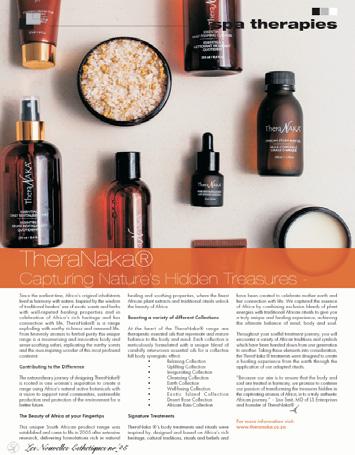
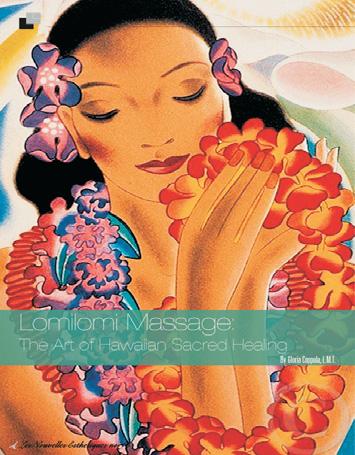
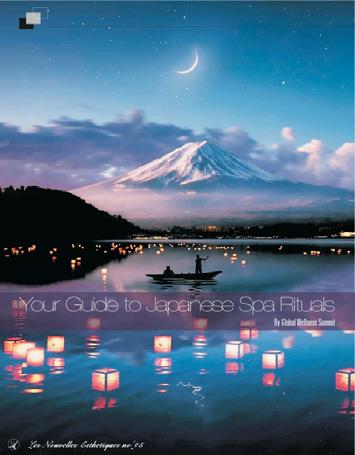



An Authentic Wellness Experience and Destination compiled by The Wellness Tourism Association determines the nine factors that ensure clients experience the true benefit of spa therapies: 1. A safe and secure environment in both perception and reality.

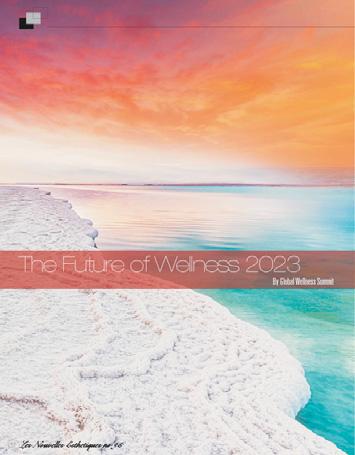

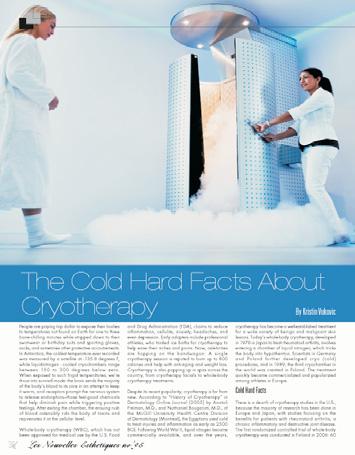
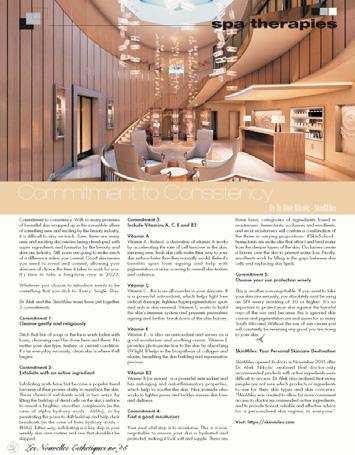



2. A clean and sanitary infrastructure for both locals and visitors. 3. A quality-of-life for locals who benefit from tourism spend —for example, the creation of jobs within the industry and the creation of a market for locally made produce, products, and services. 4. Natural assets such as hot springs, mountains, bodies of water, forests, or resources for thalassotherapy. 5. Substantial sustainability policies and practices in place. 6. The availability and accessibility of a wide range of wellness-professionals and practitioners, including where applicable tho se who offer holistic and alternative modalities. 7. A selection of hotel restaurants and independent restaurants offering healthy cuisine, prepared by chefs committed to clean eating. 8. Availability of a range of fitness-based activities and tours, such as yoga, hiking, cycling, fitness classes. And 9. A physical environment that is somewhat removed from the noise that has become daily life in the 21st century.

Les Nouvelles Esthétiques South African Edition I Max Cafe P. O. Box 81204, Parkhurst Johannesburg, South Africa 2120 I Tel: +27 83 267 2773 e-mail: info@lesnouvelles.co.za www.lesnouvelles.co.za I Publisher/Creative Director: Anthony de Freitas e-mail: tony@maxcaf e.co.za I Managing Editor: Dr. Nadine de Freitas e-mail: nadine@maxcafe.co.za I Editorial Assistant: Sarene Kloren editorial @lesnouvelles.co.za I Ad vertising Enquiries: Dr Nadine de Freitas e-mail: info@lesnouvelles.co.za I Subscription Enquiries: Tel: +27 83 267 2773 e-mail: info@lesnouvelles .co.za or visit: www.lesnouvelles.co.za Les Nouvelles Esthetiques International Publisher I 7, avenue Stephane Mallarme 75017 PARIS Tel: 01 43 80 06 47 Fax: 01 43 80 83 63 www.nouvelles-esthetiques.com I Fondateur: H. Pierantoni I Directeur de la Publications: Jeannine Cannac-Pierantoni I Redactrice en chef: Michéle de La ttre-Pierantoni I International Editions • Argentina • Baltic • Benelux • Brazil • Bulgaria • Canada • China • France • Greece • Hong Kong • Hungary • Israel • Italy • Japan • Mexico • Poland • Portugal • Romania • Singapore • South Africa • Spain • Taiwan • Turkey • Ukraine • USA • Yugoslavia Doc: Six Senses Spas skin vitality body balance A Professional take on SPA Business, Health Therapies, Products & Simple Relaxation 2023*ISSUE*95 cover CONTENTS *95
Enjoy the read ! GWI - The Future of Wellness 2023 2 Led By Destination Spas, Wellness Travel Is Booming 4 Bathing Traditions From Around the World 6 Thalgo Spa Journeys take clients around the Oceans of the World 8 Luxurious Ayurvedic Spa Treatments 10 TheraNaka® - Capturing Nature’s Hidden Treasures 12 DEFIANCE ™ - Collagen Evolved 14 Japanese Spa Rituals 16 Sothys Hydra Hyaluronic Acid4 18 Ozone Therapy 20 Getting Grounded 22 Enhance your Wellness Routine Salt Therapy 24 Resa Kahn - For The Love of Beauty 26 7 CBD Treatments to Try 28 Beauty Accessories for Retail Shelves 30 Cryotherapy 32 The Healing Gifts of Silence 34 Shamans, Sweat Lodges & Spas 36 30 Massages From Around The World 38 Cupping Therapy 42 Lomilomi Massage: The Art of Hawaiian Sacred Healing 44 Facial Acupuncture 46 Commitment to Consistency 48 Industry Intelligence - January 2023 50
The Future of Wellness 2023
 By Global Wellness Summit
By Global Wellness Summit
44
The Global Wellness Summit recently released its annual “Future of Wellness” report 2023.
1.Wellness + Gathering: Wellness Comes for the Loneliness Epidemic by Beth McGroarty
We *know* loneliness is skyrocketing; that it kills; that the #1 predictor of health and happiness is relationships. But somehow, the recent uber-capitalist wellness market has led with two things: a sea of keep-them-spending “me time” products and “digital wellness”—both lonely journeys of “self-care.” The pandemic has proven to be the breaking point: the biggest wellness trend isnew spaces and experiences that—intentionally and creatively—bring people togetherin real life, where social connection is the burning center of the concept. The future of wellness? A move from lonely to social self-care, from buying to belonging, from URL to IRL, from ego to empathy, from Goop to group.
2. Wellness + Travel: From Global Smorgasbord to Hyper-Indigenous by Elaine Glusac
Wellness and wellness tourism have long resembled Disney’s “It’s a Small World,” buffets of global experiences typically divorced from place. Yoga, born in India, is ubiquitous worldwide; ayahuasca retreats have departed their Amazonian homelands; you can get a Hawaiian Lomi Lomi massage in Dubai. But with a new critique of wellness as a profound cultural appropriator, a rising social justice movement, and greater emphasis on authenticity, travelers are now seeking much deeper cultural experiences and showing interest in going to the source of ancient healing and knowledge about how to care for the land and for themselves. Indigenous travel and going-to-the-cultural-source for wellness is our travel trend for 2023.
3. Wellness + Workplace: Workplace Wellness Finally Starts to Mean Something by
Skyler Hubler and Cecelia Girr
From protected time off to finally acknowledging women’s health needs, employee wellness is getting a much-needed rethink. Employers have been casually tossing around the word “wellness” since the 1980s. But four decades later, we have little to show for it. Worldwide, 70% of knowledge workers have experienced burnout in the past year, and a recent global study found that 38% of workers hate their jobs so much that they wouldn’t wish it on their worst enemy. Clearly, all those “workplace wellness” initiatives haven’t been working for us. But with the pandemic dramatically accelerating shifts in work models and the mental health crisis—and employees newly empowered—things are changing for the better. In this trend, we explore how superficial wellness at work schemes are being replaced with more meaningful solutions.
4. Wellness + Beauty: From “Clean” to Biotech Beauty by
Jessica Smith
As the aftermath of the Covid-19 pandemic subsides, one thing has become clear: science is king. In the world of beauty, the shift towards data-backed products has never been more evident. We’re seeing an about face from the conversation around “clean beauty” (with all its muddy claims) to a desire for lab-tested, science-backed and even lab-created products. In this trend, we look at the evolution from
the greenwashing and false claims to today’s new— and welcomed—medical, bio-positive and techforward product development, and explore what the future might hold.
9. Wellness + Sports: New Business Models for Hospitality by Lisa Starr
5. Wellness + Cities: Urban Infrastructure Just Might Save Cities by Robbie
Omar
Toro-Vaca
Hammond and
The role of the city has been reimagined countless times over the centuries (they’ve been trading posts, political and artistic centers, and recently, concrete jungles of retail and offices). But the pandemic served as a wake-up call on just how unwell our cities are, sparking a new recognition of the inextricable relationship between the health of the cities and the health of city dwellers. Global cities are now at another historical inflection point where they are rebuilding themselves around the wellness needs of their citizens. “Urban wellness infrastructure” is no longer perceived as a luxury—it’s a necessity. This trend examines diverse, creative ways that an urban wellness infrastructure—the melding of capital improvements and business opportunities that holistically address social, mental, and physical health—is being embraced all around the world as a solution for accelerating growth, fueling postpandemic recovery, and cultivating healthier, happier citizens.
6. Wellness + Weight: The Skinny on Brown Fat and Eliminating Obesity by Michael Roizen
Harnessing the ability to live longer and “younger” is among the biggest trends in medicine and wellness today. Michael Roizen, MD, believes a crucial factor in the longevity quest is recognizing that not all fat is created equal, and transforming white/yellow fat into beige/brown fat has the potential to move the needle on one of the greatest health crises—obesity. The reason? Brown fat has increased mitochondrial density and burns lots of calories, while white fat is metabolically inefficient and doesn’t use much energy. Yes, moving white fat to brown powers weight loss, but obesity is a serious disease, a key factor in heart disease, cancers, dementia and more.
7. Wellness + Governments: The Case for Coming Together by Thierry Malleret
Wellness policies have been years in the making, but in 2023 and beyond, they will evolve, multiply and strengthen. Governments *know* the crippling economic and societal costs that come when people don’t feel mentally and physically well. They *know* that unwellness shrinks the labor force while simultaneously hurting productivity—the worst possible combo for long-term economic growth. They *know* that preventative wellness saves public money because it always costs less than cure. Read More
8. Wellness + Water: Blue, Hot, and Wild
The pandemic spurred a hunger for in-nature experiences that shows no signs of abating. But when we talk about the nature surge, we usually remain on terra firma. In 2023, people will jump into the world’s wild waters for some “blue wellness”—from an unprecedented global surge in new-look hot springs destinations to wild and cross-country swimming going global.
Savvy hospitality brands are responding to demands from wellness-focused clients looking beyond the basement gym, in search of pro-athlete-level equipment, fitness classes and wellness programming, whenever and wherever they travel. Some hotel brands are even creating facilities that cater to entire amateur or professional sports teams, expanding the function of the hotel and ensuring professional quality for the rest of us. We predict businesses that support this trend will become the go-to brands for future generations.
10. Wellness + Senses: Multisensory Integration by Ari Peralta
Advances in neuroscience and neuroaesthetics confirm that, when combined, the senses elevate our human experience. Nature is multisensory and it turns out, so are we. The senses have always been present in wellness. In fact, we subconsciously associate many wellness activities with one sense or another… spa is touch, wellness music is sound, chromotherapy is color, healthy food is taste and thermal is temperature. This siloed approach is quickly changing in remarkable ways. Now brands are accessing multiple senses simultaneously to better support wellbeing outcomes, amplify wellness experience and influence behavioral change—think using multiple sensory cues, in a harmonious way to deepen meditation.
11.
Biohacking is the attempt to control biology and defy disease, decay and death so we can become superhuman. The idea is not new: our ancestors were masterful biohackers and developed low-tech hacks such as fasting, isolation, chanting, yoga, martial arts, body temperature manipulations, and traditional medicines to increase their health and wellbeing.However, there is a new trend in biohacking featuring technology that is staggering. Super-technologies such as AI, brain-computer interfaces, sensorless-sensing, CRISPR, xenobotics, nanobotics, probiotics, morphoceuticals, 3D-tissueprinting, cloud-computing and blockchain technologies allow us to manipulate molecules, modify genes, manage microbes, create living robots, regenerate body parts, seamlessly monitor and track health metrics, and manipulate our sensory inputs.
It’s not surprising that the pandemic led to a resurgence of faith. What is surprising is that the corporate world is embracing it. While diversity, equity and inclusion (DEI) initiatives in workplaces have focused on race, gender, sexual orientation and marginalized populations, one aspect that’s been strikingly left out of the conversation is now emerging: faith. As global workplaces become radically reshaped to address inclusivity, purpose and employee wellbeing, more companies are now tapping into the full identity of their employees by including religion as a full-fledged part of their DEI commitments—encouraging employees to form official (company-sponsored) groups around their faith, just as companies encourage women, people of color, and LGBTQ+ groups to do.
spa therapies
by Jane Kitchen
Wellness + Biohacking: The Wild, Wild West of Biohacking by Marc Cohen, MD
12. Wellness + Faith: Having Faith in Business by Brian Grim
spa therapies
Led By Destination Spas, Wellness Travel Is Booming By
A relatively new segment of the industry, wellness tourism is now growing at a 50 percent faster rate than conventional tourism, with no signs of slowing down. A report by Global Wellness Institute reveals the global wellness economy generated $4.4 trillion in revenue during 2020 while the wellness tourism sector accounted for $436 billion. Because a substantial number of people are willing to travel once again, hotels, resorts and destinations are making it a priority to provide wellness programs and packages to offer a much-needed mind, body and soul reboot.
Sarah Fox, Fitwel Ambassador, Associate Principal, CallisonRTKL, says, “The key to wellness is finding balance with self and place. The inherent advantages that allow for wellness travel comes with a price –your social obligation to respect your impact to a place and community and honor it by giving back. As travelers of this world, we all must understand our individual connection to the ecosystem, and the power we have to keep it in balance for the greater good.”
Cheryl Smith, Regional Practice Leader, NELSON Worldwide, adds, “Indoor spaces that encompass the use of natural materials, like wood, biophilic design such as living green walls and other indoor plant materials and daylight will improve the metal wellbeing of the guests by connecting them to nature. Hospitality design that creates a variety of outdoor spaces will connect guests to the nature and provide a broad offering of outdoor programs improving overall mental and physical health of the guests.”
As an example: The very first of its kind in the United States, The Snow Room at The Lodge at Woodloch in the Pocono Mountains of Pennsylvania is a great alternative to the age-old Tyrolean tradition of the cold bucket shower, as it is a more gentle form of cooling. In the Snow Room, the compact dry snow and the crisp cold air allow for rapid and efficient cooling that is extraordinarily gentle, mild and pleasurable. The Snow Room features snow covered branches and bench ideal for holistic cooling of the body after a hot sauna experience. The co-ed
Roger Sands
Himalayan Salt Sauna includes a Himalayan Salt Wall. When heated, Himalayan salt releases negatively charged ions which serve to purify the circulating air as well as allow our bodies to reap health benefits including stress reduction, energy increases and mood boosts at a biochemical level.
Connection and wellness is top of mind. Kimpton Kitalay Samui: IHG hotels and resorts across the globe aim to help guests relax and recharge. “Wellness and well-being are no longer being looked at as an indulgence and are instead considered responsible investments and priority components of people’s daily routines,” says Andy Barge, wellness director, Six Senses Ibiza. With connection and wellness top of mind at Kimpton Kitalay Samui, Koh Samui, Thailand, its Pimãanda by HARNN spa graciously pampers for those seeking to restore balance with a 14-step spa ritual or its signature treatment, “Paradise of Wondrous Sea.”

Inspired by the Manora dance dramas of the southern provinces of Thailand, it begins with the Kasi Thara Bath Ritual before moving onto a natural pearl body scrub that readies the skin for the Trio of Bliss, a warm oil massage that combines three massage techniques.
The Buenaventura Golf & Beach Resort. The resort is ideal for guests who want to indulge themselves.
The Buenaventura Golf & Beach Resort in the serene beach community of Riviera Pacifica lies just two hours outside of the hustle and bustle of Panama City. The resort is ideal for guests who want to indulge themselves in rest and reflection with its new wellness package. Included is a 50-minute recovery therapy massage at the resort’s award-winning Corotú Spa, health-focused meals, complimentary use of bicycles, kayaks, volleyball and tennis courts. Guests staying five days or longer can experience two spa treatments.
The 118-room resort offers a range of on-site activities with seven swimming pools, two Jacuzzis and four plunge pools. With nature at the forefront, guests seeking adventure have access to horseback riding sessions throughout the property’s pristine trails.
Ojai Valley Inn: A Private Kuyam Experience at Ojai
Valley Inn is an ideal way to reboot. A Chumash Native American Indian word that means “a place to rest together,” Kuyam combines the therapeutic effects of self-applied desert clay infused with essential oils, intense dry heat and inhalation therapy. In a sauna-like environment, the journey is guided by a traditional Chumash narrative. This unique detoxifying experience is concluded with a refreshing rinse and presentation of herbal tea while your body core temperature cools.
Lake Nona Wave Hotel: Guests of the brand new Lake Nona Wave Hotel, Orlando, Florida, can take advantage of the hotel’s Technogym-powered fitness studio while enjoying the Lake Nona Performance Club, one of the most complete wellness centers in the nation. Within the center experience mindfulness at Dr. Deepak Chopra’s recently debuted, first-ever Chopra Mind Body Zone and Spa, offering aerial yoga and ayurvedic massage. From rock climbing and virtual golf tuition to group cycling and barre classes, guests can choose between several extensive fitness offerings. Lake Nona Wave Hotel conceptualized Well+ech by Wave – a collection of five guest rooms equipped with a rotating roster of inventions from ten of the year’s most pioneering brands leading the future of health and sleep innovations.
Experience a number of unique guided Journeys at The Mauna Kea Resort. On the Island of Hawaii, The Mauna Kea Resort offers visitors the chance to experience a number of unique guided “Journeys” taking key elements of ancient wisdom to restore personal balance. Each journey is curated to transport the mind and spirit to destinations across the globe. An Asian Journey includes a Balinese Massage, Mandara Signature Facial, Mandara Coffee and Coconut Milk Body Polish. The Indian Journey features a Fire & Ice Massage, Biotec Skin Surfacer Facial, Exotic Lime and Ginger Salt Grow.
Roger Sands: As a travel journalist for three decades, my articles have appeared in The New York Times, the Philadelphia Inquirer, BELLA NYC, US News & World Report and many other media outlets.
Les Nouvelles Esthetiques no’95 4
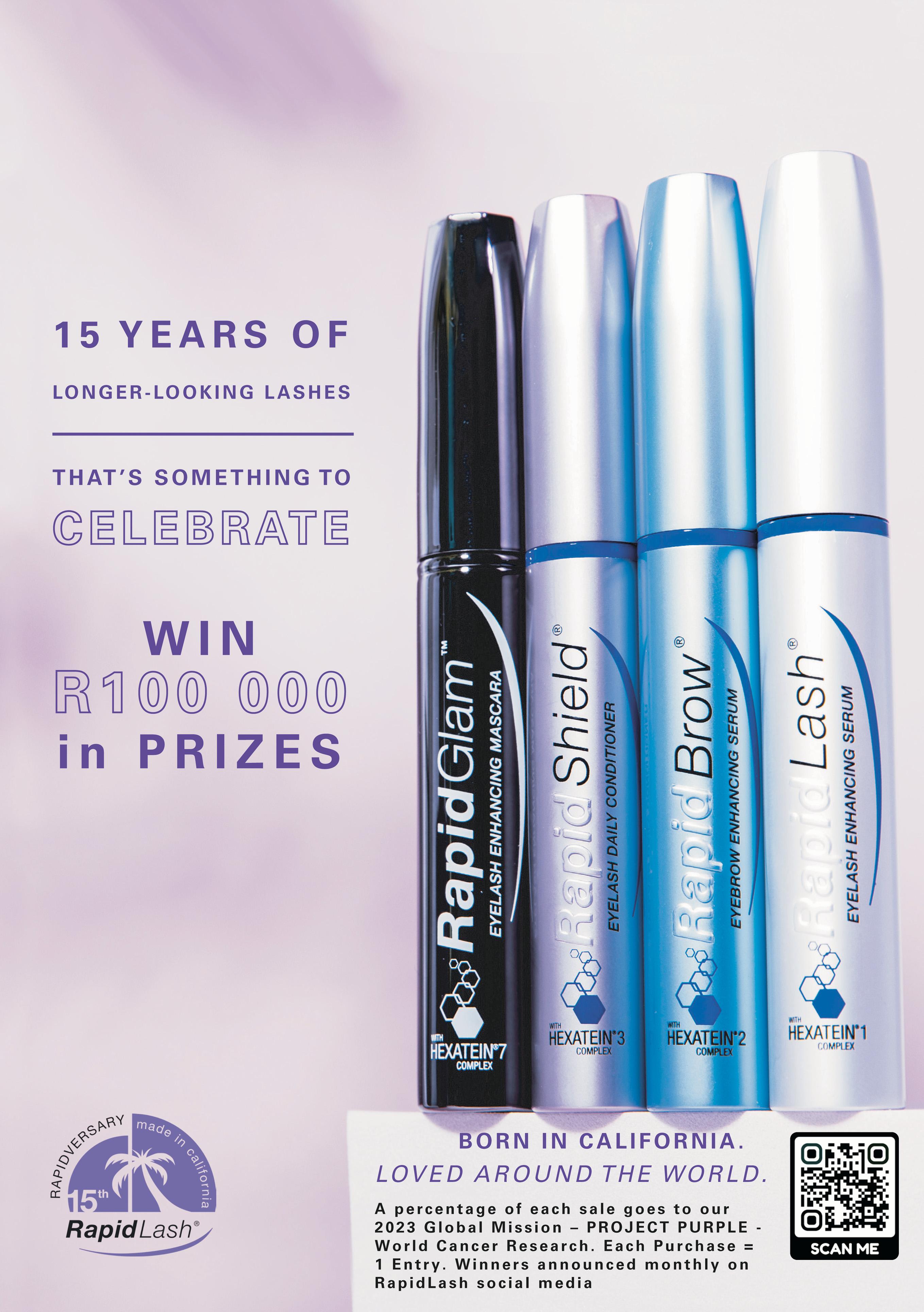
Bathing Traditions From Around the World, That Are Worth Traveling For
By Leah Prinzivalli
In my opinion, no travel itinerary is complete without a trip to the local spa. Wellness practices are a unique way to experience hyper-local traditions, often with native ingredients—think Manuka honey in New Zealand or Aruban aloe. From luxury spas to neighborhood bathhouses, experiencing local bathing rituals is a pretty great way for wellness travelers to see the world.
That said, if your favorite part of a vacation is the hotel room tub, why not opt for a traditional bathing experience instead? To inspire wanderlust and celebrate bathing cultures that dot the globe, read on for insight into what seven spa baths look like in different locales.

Balinese Flower Baths
Yes, the famous flower baths of Bali make for an amazing Instagram photo, but there's much more to the tradition than just posing in a floral-covered tub. In Balinese culture, traditionally, flower baths were used as healing rituals, in addition to a luxe spa day. Spend some time soaking in a tub of beautiful flower petals and natural oils, and emerge refreshed in body and spirit.
Budapest's Party Baths
Budapest’s well-earned nickname is the “city of
spas.” Hungary’s capital has been drawing spaloving crowds since the Ottoman empire, but the “sparty” is a very 21st century invention. Picture a nightclub, complete with DJ sets and cocktails, except the whole shebang takes place in a geothermal hot spring.
Finnish Saunas
“Many Finns think you can not grasp Finland or its culture without bathing in a sauna”. In that case, you simply must add a spa day to your Finland trip itinerary. Expect a bare bones sweat lodge without frills like tinkling spa muzak or, well, clothes. To get the full Finnish experience, use the provided bundles of “vasta” (birch twigs) to gently strike your skin and stimulate circulation.
Temazcal Sauna
Atemazcal is a healing, purifying sweat lodge ritual led by a shaman, stemming from the Mayan tradition. Today, you'll find them throughout Mexico and Central America. You’ll enter into a waist-high circular dome structure heated by smoldering rocks, and once the door shuts, the group sits in pitch black darkness to sing, chant, and share intentions. Over roughly two hours, the heat gets intense, and traditions say the sweat encourages healing and growth.
Calistoga Mud Baths
That same mineral-rich soil that makes Napa Valley wine so delicious also fortifies the mud baths of Calistoga, California, a town in Napa Valley. Local spas utilize water from the 212-degree-Fahrenheit hot springs in mud baths that are designed to purify skin, improve blood circulation, and relieve muscle tension. Plus, it’s an adult excuse to play in the mud— with a glass of wine in hand.
Japanese Onsen
Japanese culture takes full advantage of the country’s active volcanoes, using geothermal water to fill onsen bathsin public bathhouses known as ryokans. The tradition dates back to the 8th century, when Buddhism began to take hold in Japan. Now, tourists and locals alike take to the baths for a day of purification and relaxation in the heated water.
Turkish Hammam
In Turkey, you’ll find the traditional hammam bathing ritual in both local bathhouses and adapted for tourists in hotel spas. According to Istanbul Insider, a day at the hammam means either a self-guided day of relaxation in steam room or a treatment by a masseuse, offering specialized massages and facials.

Les Nouvelles Esthetiques no’95 6
spa therapies

spa therapies
Thalgo Spa Journeys takes your client on a trip around the Oceans of the World
Thalgo la Beaute Marine, introduces a very special innovation, that allows guests can travel to a faraway destination, anywhere in the World, with a Thalgo Spa Journey.
Being a purely marine based brand, Thalgo la Beaute Marine discovered something special: active ingredients from each of the 5 Oceans of the World - to provide not only the sensory experience of a Holiday escape, but the efficacy to add to the benefits of having a Thalgo Body treatment, as opposed to a normal massage.
Each Ocean Journey provides an a la Carte experience that caters for Single, Couple and Groups of guests, with a choice of a Full Body Exfoliation, Hydro Bath, and a Massage - or all of them combined into a blissful 2 Hour experience.
Thalgo Journeys are THE perfect complement for Spas that make use of Water Facilities, such as Hydro Baths, Rasuls, Rain Forests, and In room facilities - to elevate the experience!
Each Journey has something special to offer, we delve into some detail on each Ocean and below:
Isle Pacifique - a Journey to the Pacific Islands - for Relaxation. With fragrances or Frangipani, Vanilla and Coconut, and an the active ingredient Algae of the Lagoons, transport guests to the Pacific. Crystal Blue Waters, Llomi Llomi Massages, Warm Bora Bora Sand Massage Pouches - perfect for RELAXATION.
Every day, we are faced with various life events that can influence our bodies stress. A relaxing massage helps us counteract this phenomenon and encourages
the body to let go. Incorporating a Monoï fragrance reminiscent of holidays in the sun and a heated accessory into the massage amplifies the relaxation of body and mind and helps the client unwind.
Joyaux Atlantic - a Journey to the Atlantic Coastfor Energy. Since the dawn of time, the erosive force of waves has coloured the Atlantic coast sand, depositing a host of energising semi-precious minerals. The Atlantic Ocean boasts majestic landscapes rich in contrast with precious minerals to be found on its various beaches. The erosive force of the waves has coloured the sand and deposited these treasures from neighbouring rocks. Its stones bring energising, stimulating powers to our bodies.
The Ritual takes inspiration from these stones, creating an invigorating sensory journey inspired by the Atlantic coastline.
More than a treatment, it's a new experience of WELLNESS.Set off on this revitalising journey inspired by 'marine lithotherapy' and use the power of stones to restore the body's vital energy stores. With active ingredient Energising Precious Algae, with added Gold Ions, leaves the skin glowing and ENERGISED!
Merveille Arctic - A Journey to the Arctic Landscapes - for Muscle Tension
DISCOVER THE WONDERS OF POLAR NATUREImmaculate white ice landscapes, voluptuous hot springs, unexpected underwater flora, for an exhilarating spa experience.
Based on ancestral Nordic rituals, offering the benefits of hot and cold (Kneipp) therapy to relax the body
and release tension.The polar nature of the Arctic offers Water in all its forms - white ice, icy water from the great Fjords and voluptuous steam from Icelandic springs. The mix of relaxing warmth and invigorating cold has unparalleled relaxing powers on our bodies. With the active ingredient Arctic Moss, and a White Fragrance, guests are transported to the Icy ocean for total MUSCLE EASE
Mer Des Indes - A Journey to the Indian Oceanfor Rebalancing and Grounding. Ayurveda goes beyond simple medicine. It is a philosophy and a life science (Ayur = Life, Veda = Science).
The word “Ayurveda” comes from Sanskrit, the sacred and literary language of India and it is dedicated to the learning, development and flourishing of humans, their body and mind. It offers a variety of methods such as astrology, yoga, meditation, massages, breathing exercises or food which aim to improve emotional, physical and mental health.

Ayurveda is based on the belief that each living being is made up of 5 elements: water, fire, earth, air and the ether (this is space, it cannot be felt or touched). With Ayurveda & Marma Inspired Massage, a red Algae from the Indian Ocean and using Sacred Lotus and Ginger - this Journey will not only Hydrate and Restore the Skin's moisture barrier, but also provide complete Harmony and GROUNDS the Guest.
There is ONE more Journey to come - launching in the next Year - based on the SOUTHERN OCEAN - watch this space for some special experiences!
For more information on the Thalgo Spa Journeys visit: www.thalgo.co.za
Les Nouvelles Esthetiques no’95 8
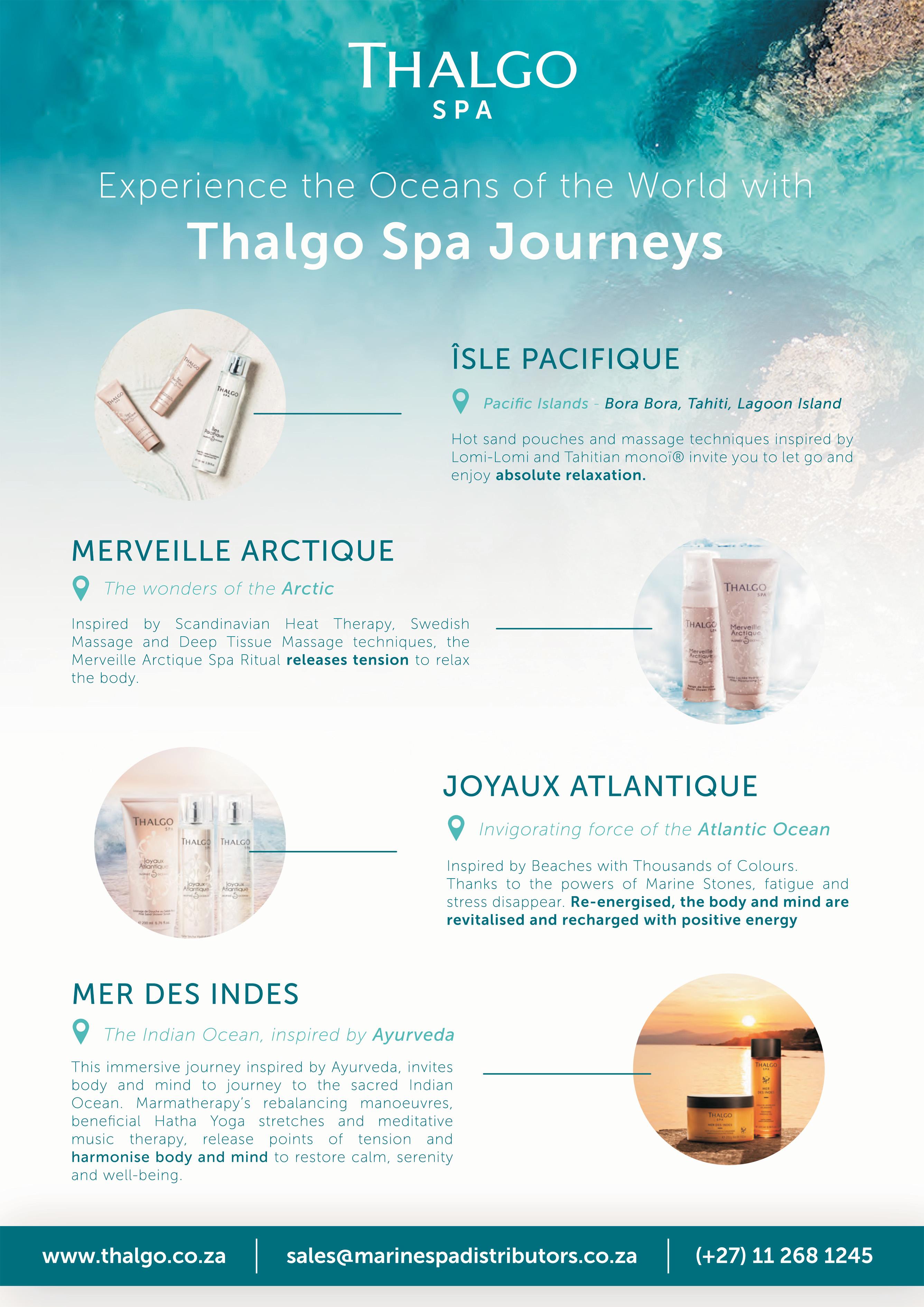
5 Luxurious Ayurvedic Spa Treatments
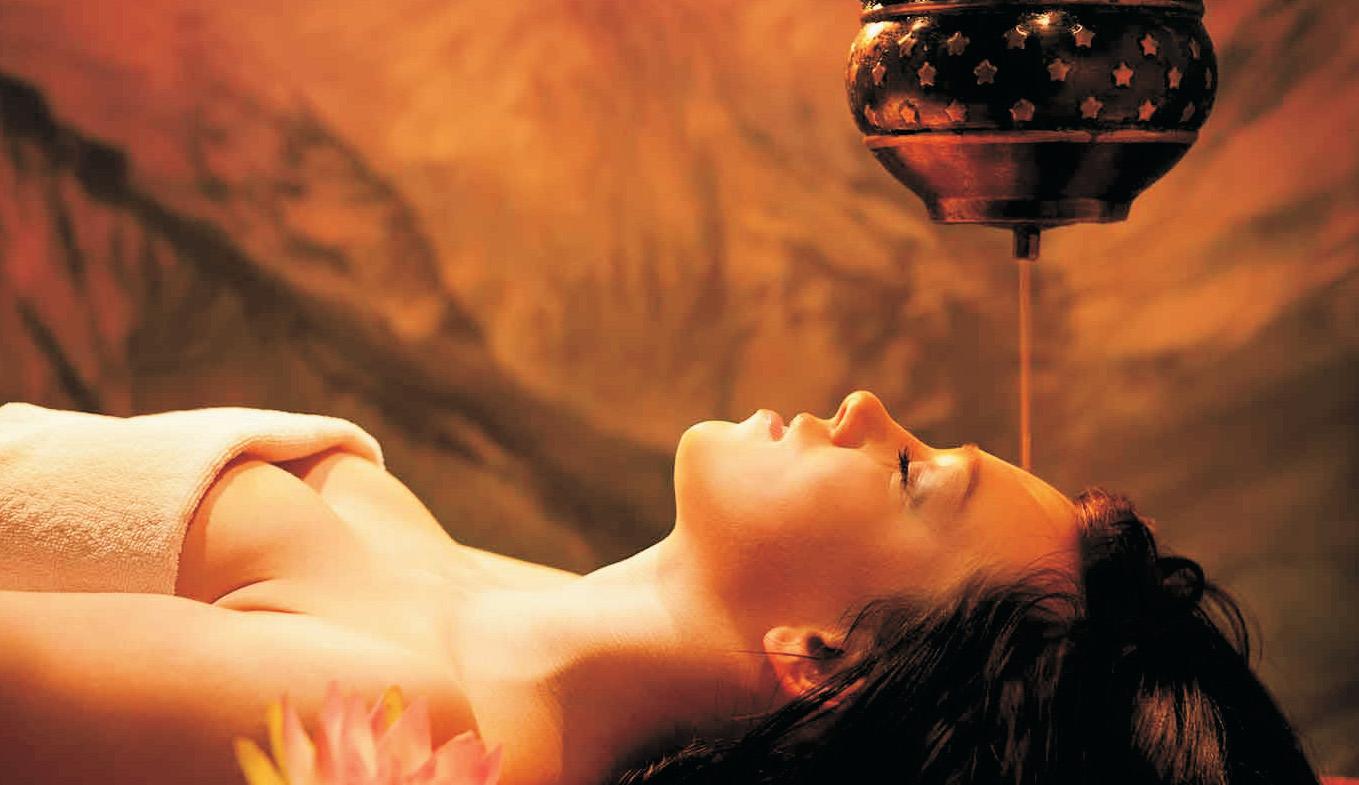
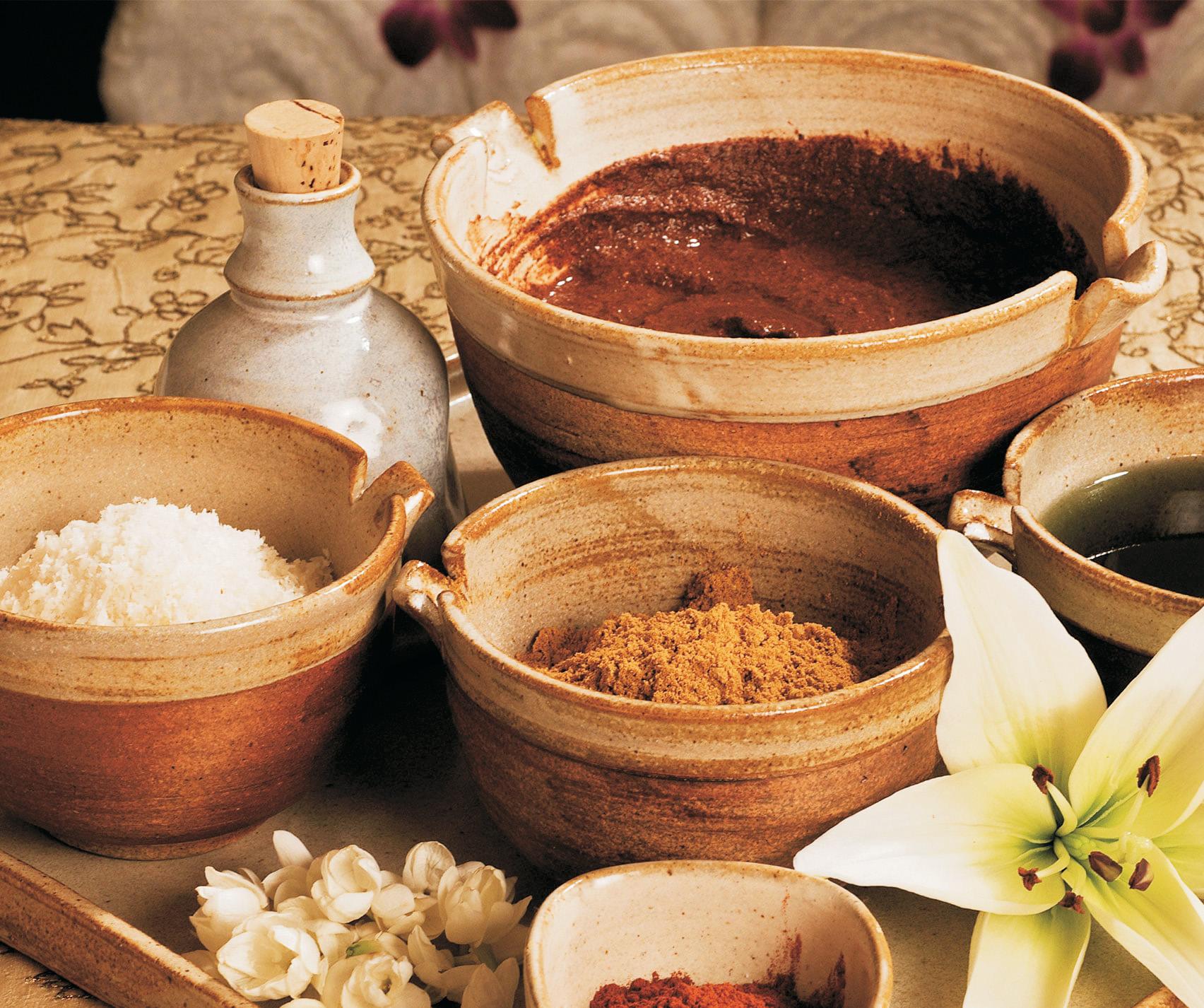
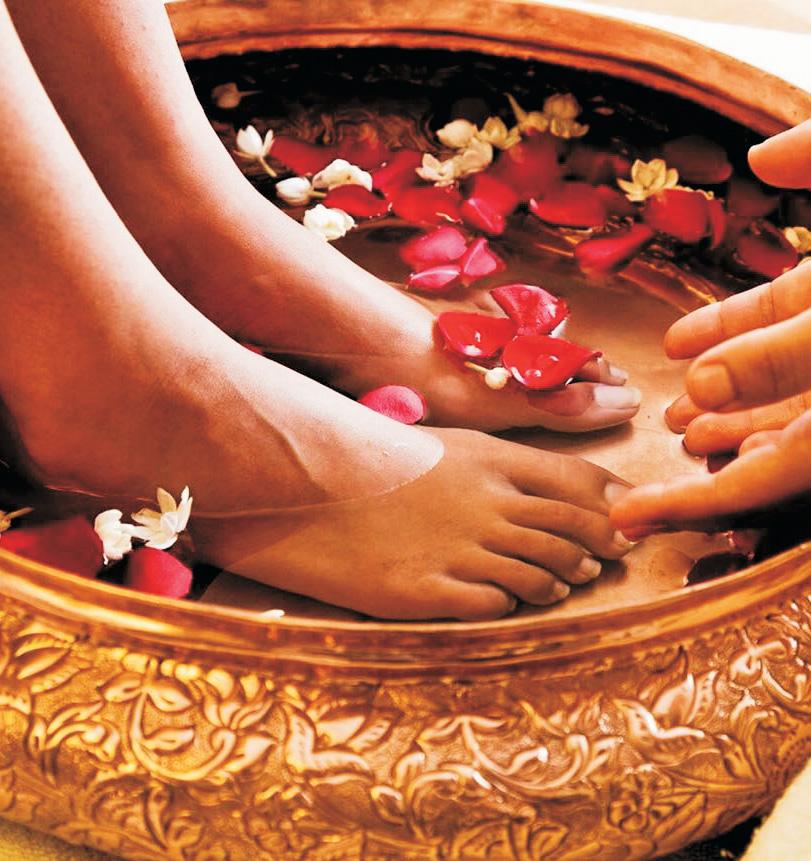 By Bess O'Connor
By Bess O'Connor
Ayurvedic spa treatments are the crème de la crème of the massage world. They've been tried and tested through the ages in India, not only for relaxation, but for health benefits such as improving circulation, toning the muscles, calming the nerves, lubricating the joints, and increasing mental alertness. They are also used for supreme detoxification, skin health, energy, stamina, and better sleep.
There are several key things that make an Ayurvedic massage different from a regular massage. From the training of the masseuse to the long-lasting

effects, here are some of the things that set Ayurvedic massages apart from the rest.
1. Healing Arts Masters. The therapists at the Chopra Center are trained in all the traditional massage therapies before going through extensive and on-going Ayurvedic training to perfect their craft.
2. Special Ayurvedic Oils. Carefully crafted organic oil blends are infused with Ayurvedic herbs and heated to the perfect temperature to promote relaxation and detoxification. At the right
temperature, these special oils enter through the skin and pores, bind to the Ama (toxins), and are released to purify the body.
3. Intention. Depending on the treatment, an Ayurvedic therapist focuses on clearing the energy channels in the body, moving and dislodging toxins, and balancing the chakras (energy centers). A simple shift in intention from rubbing the muscles to clearing the physical and energetic pathways can be the difference between a relaxing massage and a life-changing event.
10
Les Nouvelles Esthetiques no’95
4. Sensation. The strokes and movements in Ayurvedic massage are more connected and vigorous, yet never painful. This increases circulation and lymphatic drainage … and feels utterly blissful. Most recipients leave feeling energized and rejuvenated.

5. Benefits. Primarily, these unique treatments are intended to make the energy flow properly in the body, clear all physiological and energetic pathways, and reduce stress.
Turn your next massage into an Ayurvedic treatment. Here are the top five most luxurious Ayurvedic spa treatments available.
Odyssey Ayurvedic Massage Treatment

This treatment is named for the blissful journey it takes you through that includes five different Ayurvedic techniques. To start, you can select one or two therapists, and you should try two therapists at least once as four hands are better than two. It begins with Garshana, a dry glove gentle exfoliation that encourages the first stage of detoxification. It stimulates the lymphatic system and prepares your skin to absorb the special oils. Next, comes the Abhyanga, in which your body is covered in warm herbalized oil from scalp to toes with specialized friction strokes designed to move the oil deep into your tissues to loosen and dislodge Ama. Then the slow, deep, penetrating strokes of Vishesh come into play to promote ultimate relaxation.
spa therapies
The treatment is completed with the ancient technique of Marma therapy and chakra balancing, using personalized Dosha-specific essential oils. Marmas are energy points on the body and can be stimulated to awaken your inner energy, calm the mind, and activate healing in different organs and systems in the body.
This multi-level treatment works on the entire system— mental, physical, and energetic. If you seek to heal, balance, and transform opt for this pinnacle of massage treatments.
Pizichilli (pitzi-chilli)
This uber luxurious 70-minute warm “oil bath” of sorts promotes extreme detoxification. It is performed by two therapists and is truly unforgettable. The Pizichilli offers continuous warm streams of herbalized oil that are rhythmically smoothed into your body. This treatment will warm, lubricate, and nourish your body to enhance circulation, eliminate toxins, and deeply purify, leaving you relaxed and rejuvenated.
Shirodhara (shiro-dar-a)
Probably the most well-known and highly spiritual experience is the Shirodhara. It is a very meditative and tranquil treatment in which a soothing stream of warm oil is poured over the forehead and onto the “third eye” chakra, your intuitive energetic center. It calms the central nervous system and integrates the mind and body. Many experience
visions and restful awareness, where it almost feels like you’re asleep, yet still aware. You have to feel it to believe it.
Gandharva Therapy (gaan-darva)
Sound is a powerful healing tool for the body and mind. The Gandharva uses sound therapy to improve the flow of energy. Along with a full-body warm herbalized oil massage, the therapist incorporates the use of crystal singing bowls to vibrate and transform the cells in your body. This unique treatment interweaves nurturing touch with harmonic sound waves to awaken vitality and blissfulness.
Abhyanga (abee-yan-ga)
This is the quintessential traditional Ayurvedic treatment, and after experiencing it you'll understand why it's so popular. Abhyanga is a choreographed massage using friction-based strokes and warm Dosha-specific oils. As the oil is massaged into the skin, it penetrates deep into the tissues to loosen toxins at a cellular level. The Abhyanga enhances immune system function, promotes circulation, and creates deep relaxation in the body and mind.
For the grand finale, you can choose the Doshaspecific treatment of your choice including Shirodhara or Marma therapy to leave you feeling totally blissed out.
spa therapies
TheraNaka® Capturing Nature’s Hidden Treasures -
Since the earliest time, Africa’s original inhabitants lived in harmony with nature. Inspired by the wisdom of traditional healers’ use of exotic scents and herbs with well-reputed healing properties and in celebration of Africa’s rich heritage and her connection with life, TheraNaka® is a range exploding with earthy richness and renewed life. From heavenly aromas to herbal purity this unique range is a mesmerising and innovative body and sense-soothing safari, replicating the earthy scents and the awe-inspiring wonder of this most profound continent.
Contributing to the Difference
The extraordinary journey of designing TheraNaka® is rooted in one woman’s inspiration to create a range using Africa’s natural active botanicals with a vision to support rural communities, sustainable production and protection of the environment for a better future.
The Beauty of Africa at your Fingertips
This unique South African product range was established and came to life in 2005 after extensive research, delivering formulations rich in natural

healing and soothing properties, where the finest African plant extracts and traditional rituals unlock the beauty of Africa.
Boasting a variety of different Collections
At the heart of the TheraNaka® range are therapeutic essential oils that rejuvenate and restore balance to the body and mind. Each collection is meticulously formulated with a unique blend of carefully interwoven essential oils for a collective full body synergistic effect.
•Relaxing Collection
•Uplifting Collection
•Invigorating Collection
•Cleansing Collection
•Earth Collection
•Well-being Collection
•Exotic Island Collection
•Desert Rose Collection
•African Rain Collection
Signature Treatments
TheraNaka ®’s body treatments and rituals were inspired by, designed and based on Africa’s rich heritage, cultural traditions, rituals and beliefs and
have been created to celebrate mother earth and her connection with life. We captured the essence of Africa by combining exclusive blends of plant energies with traditional African rituals to give you a truly unique and healing experience, achieving the ultimate balance of mind, body and soul.
Throughout your soulful treatment journey, you will encounter a variety of African traditions and symbols which have been handed down from one generation to another. Taking these elements into consideration, the TheraNaka ® treatments were designed to create a healing experience from the earth through the application of our adapted rituals.
“Because our aim is to ensure that the body and soul are treated in harmony, we promise to continue our passion of transforming the treasures hidden in the captivating aromas of Africa, in to a truly authentic African journey.” –
Lisa Smit, MD of LS Enterprises and founder of TheraNaka®
For more information visit: www.theranaka.co.za
Les Nouvelles Esthetiques no’95 12
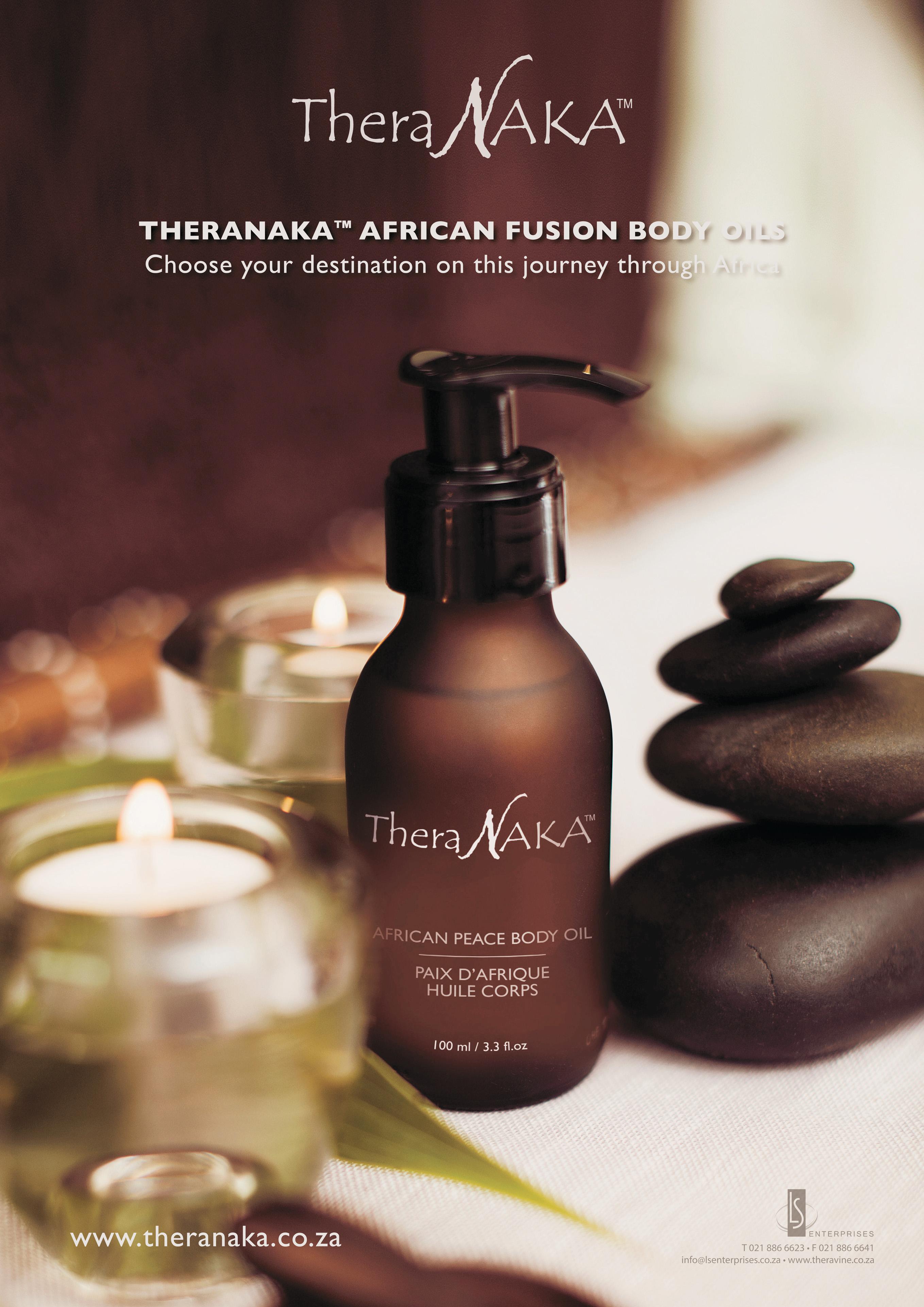
DEFIANCE ™ -
By Blue Sky Distribution International
The Science of Collagen has Evolved
Let’s Talk The Science of Collagen.
Higher Dosage:
Defiance is a unique collagen formulation that contains 11,000 mg of hydrolysed collagen per dose, making it the most potent medical-grade collagen offering on the market. In addition, Defiance also includes 2,340 mg of branch-chain amino acids (BCAAs), collectively providing a powerful dose of 13,340mg of amino acids (protein) in each serving. Regular collagen’s amino acid profile is insufficient to make claims of recovery, endurance and prevention of muscle fatigue. As such, additional BCAAs (LIsoleucine, L-Valine, and L-Leucine) have been carefully formulated in the optimal ratio to further boost the benefits of collagen.

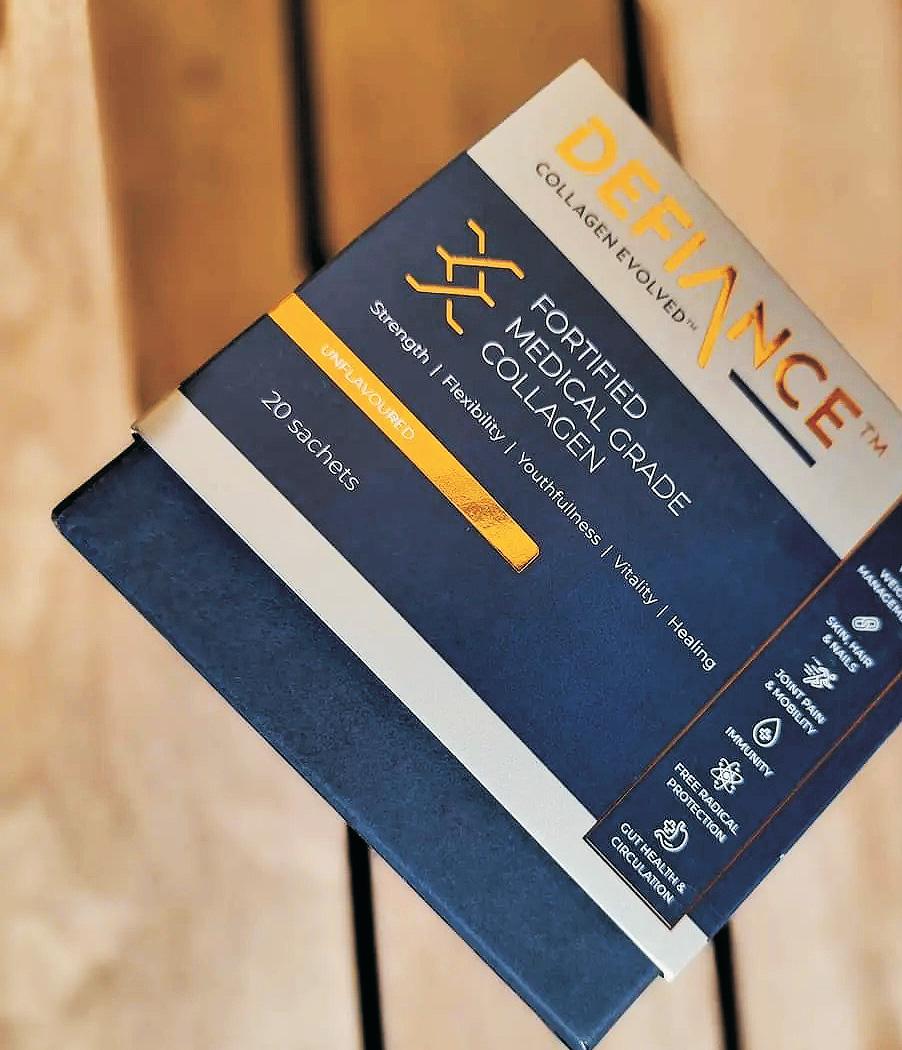
Enhanced Utilization:
Contrary to popular understanding, collagen does not remain in its complex original form and is broken down into its amino acid building blocks by digestion. To restore the collagen triple-helix form again, additional ingredients are required. A ground-breaking blend of Vitamin C, Zinc, Sulphur (from MSM) & Manganese was engineered to rebuild the collagen structure. Without this the collagen protein being ingested cannot fulfil its promise. This ensures the effectiveness of the supplement and stimulates the body's natural collagen production.
Experts in Weight Management:
Clinical studies have shown that Fructose and other sweeteners to be responsible for weight gain. Sprezzatura, being weight management experts, have been mindful of this fact and utilizes Stevia and Erythritol in its formulation. When compared to Stevia & Erythritol, other sweeteners like Fructose can have more than 25 X the glycaemic index.
Proven Performance:
Defiance - Collagen Evolved ™ is a highly advanced, formulation that contains additional ingredients to support cellular regeneration and protection. The claims of Strength, Youthfulness, Flexibility, Vitality and Healing can now be substantiated with proven benefits to the body, hair, nails and skin. Defiance was designed to be taken on-the-go, which is why it is packaged in individual sachets. Defiance™Collagen Evolved provides over 293 500 mg of active, medical-grade “Beauty from Within” per month – The Most effective Collagen Offering globally.
SOURCE: Edwin Govender (B.Pharm. MBA) - Lead Formulation Pharmacist at Sprezzatura (a division of Torus Health Care Pty Ltd)
For more information contact blueskyinternational.co.za / Tel: 073 053 8830
If your Collagen is not medical grade, ask why!
To ensure the utmost quality and safety, it's crucial to opt for medical grade hydrolysed collagen products that are fortified by pharma professionals. These products are meticulously crafted to meet the rigorous standards and demands of the pharmaceutical industry.
This is significant because the ingredients undergo thorough testing and stringent quality control measures to ensure their safety and efficacy. Moreover, these products are carefully formulated and manufactured with precision to guarantee accurate dosing and reliable effects.
Medical grade products are created in highly hygienic conditions and are subjected to regulations and guidelines to comply with industry standards and best practices.
Ultimately, opting for medical grade fortified collagen products is important for healthcare professionals and consumers to have the assurance of using the best quality products that are manufactured and distributed with the highest level of standards and best practices.
Les Nouvelles Esthetiques no’95 14
innovation

Your Guide to Japanese Spa Rituals
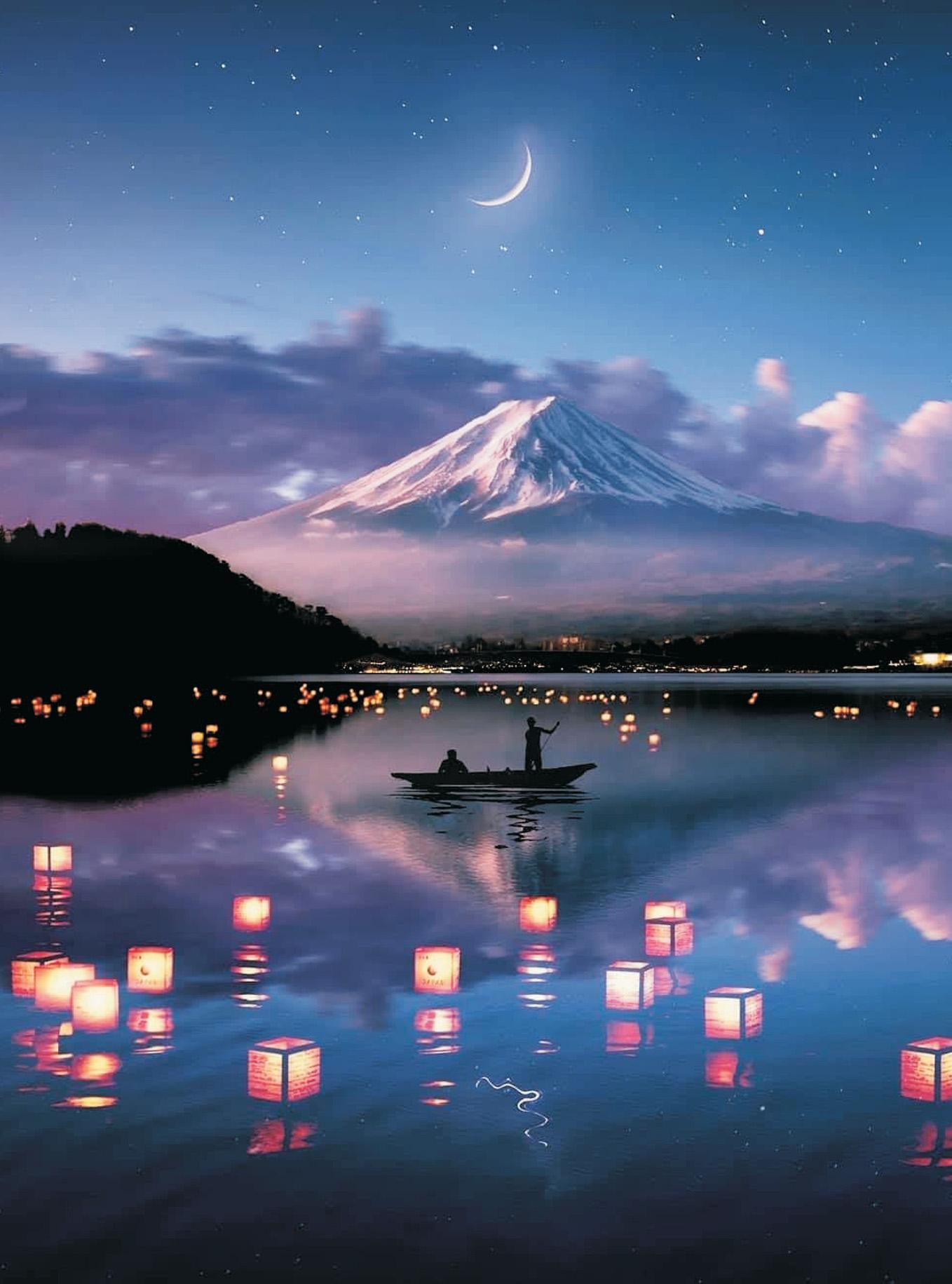 By Global Wellness Summit
By Global Wellness Summit
Les Nouvelles Esthetiques no’95 16
spa therapies
Japan is home to some of the oldest spa rituals in the world, and those rituals remain at the very heart of Japanese beauty today. Blessed with an abundance of natural and medicinal hot waters springing from the earth, called onsen, the Japanese have for centuries been bathing in curative waters to cleanse and rejuvenate the mind, body and spirit. Water is regarded as the symbol of life ever flowing, changing and renewing. Immersion in it allows the body to rest, restore and revive.
Spa is translated as health through water, and with the spa industry now considered one of the fastest growing in the world, its little wonder people are being drawn to Japan to immerse themselves in one of the oldest and most authentic spa experiences. In Japan there are more than 20,000 naturally occurring medicinal hot springs, most in beautiful natural settings deep in the mountains, next to rivers and lakes or even flowing into the sand or sea.
Bathing in a natural Japanese onsen is not only about partaking in an ancient ritual but also an opportunity to experience a culture deeply rooted in nature. The Japanese appreciation of bathing goes back to the Shinto period before Buddhism was introduced by the Chinese in AD 532. Shintoism is the root of Japanese spirituality, based on a joyful respect for nature. It is a way of life rather than a philosophy or religion.
Shintoism celebrates the spirit of nature, in particular the water element. The clear, flowing and endlessly renewing character of water reflects life itself. In the past, Shinto priests travelling the land would discover these temples of nature spurting from the earth, often performing ceremonies in their honour. Rivers and streams were regarded as symbols of the everflowing cycles of life. Waterfalls were valued as places for meditation. The sea was seen as the very source because all the nutritious foods, like seaweed and fish, derived from it. During festivals, purifying bathing rituals are still performed in the ocean today.
Bathing Rituals
Daily bathing rituals have given the Japanese a reputation as the cleanest culture in history. The bath was, and is, a place where people came to meet and chat. Farmers from different villages would meet at the local hot spring and exchange stories. Men and women bathed together in an uninhibited and free-spirited manner. But in 1853, as a result of Westerners reaction to mixed bathing, the trend for separate bathing began. Today, only in remote areas do men and women still bathe together. An evening bath is an integral part of the Japanese lifestyle. There is a place in each home dedicated to washing – normally a hand-shower or faucet with running water with a bath stool, sponges, brushes and so forth close by. A relaxing soak in a deep, hot bath is essential to wellbeing. However, lack of space means some houses and apartments don’t have a shower or bath. This is why, from the streets of Tokyo to remote mountainside villages, you see men and women carrying their cypress buckets, brushes and tools down to the local communal bathing house for their daily bath. These bathing houses are renowned for their cleanliness, with towels and soaps often provided.
The Ryokan
A ryokan is a traditional inn, often built around a thermal spring, and a stay in one is an essential part of the onsen ritual, although day visits to onsens are popular, too. There are over 8000 ryokans in Japan, most of which have been passed down from generation to generation.
The experience of staying at a ryokan is the epitome of grace and not to be missed. Your arrival will be met with gracious bows by impeccably dressed women who will usher you into a simple room with tatami mats laid in a deliberate style. The hospitality begins with a traditional, freshly brewed, locally made green tea plus a sweet cake or rice cracker and unfolds with ease from there. You’re encouraged to discard the old and embrace the new by removing your clothes and wrapping a pure cotton kimonostyle dress, a yukata, around your body. Each ryokan has its signature yukata and youll see guests from different ryokans floating around in their yukatas in the streets, enjoying a stroll after a nice hot bath.
The philosophy of the ryokan is based on adherence to the principles of nature and it is created with natural materials as far as possible. The waters nearby are enriched with minerals and negative ions that help drain away all the toxins; youll find many city dwellers in them. Ryokans often provide facilities for groups, attracting companies keen to give staff a well-deserved break that combines bathing, shiatsu massage, karaoke and sake.
To dine at a ryokan is to experience food as art. It begins with a customary plum wine and develops from there with precious servings of artfully arranged items like wasabi leaves, crab salad, tofu with sea urchin, small calcium-enriched crispy fish, a purple jelly-like ball of mountain potato, stems of leafy water vegetables, tempura mountain vegetables, slices of salmon wrapped in ricepaper, miso, rice and pickles. As in the bathing experience, with each mouthful you take in the spirit of nature.
In most ryokans meals are served in the privacy of your room, though some have lovely dining facilities overlooking manicured gardens with small waterfalls. Green tea, miso soup, spinach with dashi flakes, a bowl of silky tofu and baby river fish are just some of the morning options.
Its customary to take a dip before retiring to bed. In the evening, expect to find your room transformed from its zen look with the installation of big, comfortable futons made of traditional Japanese fabric lying side by side on the floor. A fresh rose and haiku poem may be placed delicately on your pillow, once again illustrating the beautiful detail of Japanese hospitality.
The Onsen, or Hot Spring
Bathing in the outdoor onsen is one of the most popular leisure activities in Japan. Its where you can submerge yourself in medicinal waters for a most enlivening experience. The onsen is regarded as a place of physical and mental rehabilitation and medical doctors often prescribe time spent in these therapeutic waters. Throughout the country, the water quality varies from spring to spring. Some thermal springs are renowned for being rich in
chloride magnesium, calcium, iron and potassium while others are known for their therapeutic effects on skin, bronchial, digestive and hypertensive problems.
Water is usually classified by temperature, pH level and mineral content. Youll find the thermal springs vary in colour according to their nutrients. Ironenriched springs are a reddish-orange colour and alkaline waters may be bright green. There are waters rich in sodium chloride that are known to aid digestion, heal wounds and help with hypertension, post-operative rehabilitation, infertility and arthritis. The simple thermal springs are thought to heal broken bones, wounds, skin conditions, neuralgia, rheumatism and fatigue. Radioactive waters are recommended for those with diabetes and chronic digestive problems.
Backdrops, too, vary from region to region. There are thermal springs found 2284 feet above sea level; others are deep in the mountains where water flows continuously, guaranteeing pristine bathing year round. Others gush out of rocks, snow, ash, caves and sand (known as sand baths). Often, rocks are placed around the healing waters to give them a natural rockpool feel. You quickly adapt to the ritual of slipping off your yukata and lowering your body into the deliciously warm water with the light from the moon and stars highlighting the steam that rises like mist above the water. The quiet ambience permeates your spirit, making bathing in these healing waters a memorable experience.
The Ofuro
The communal bath ofuro is normally located in the basement or first floor of a ryokan. Remove your yukata and geta (wooden clogs) and take the prerequisite scrub and rub to wash away any toxins before communal bathing.
Reminiscent of a Rubens painting, the women sit in these steam-filled rooms on little bathstools and pour water from small cypress buckets over their bodies. Even at 6am youll find dedicated bathers scrubbing their skin with natural brushes and lathering themselves with green-tea-based soaps and shampoos. The bathrooms are often equipped with all the accoutrements youd find in a five-star hotel shampoo, lotions, hair bands, shower caps, toothbrushes, toothpaste, combs and brushes.
The indoor area normally has a selection of baths of varying temperatures to bathe in. The idea is to move to pools of different temperatures to keep the body continually rejuvenating. The atmosphere is one of quiet fun. Japanese women are typically portrayed as serene, but a gathering of women bathing together can be very festive. In water, they are vivacious and childlike in their enthusiasm.
Beauty is synonymous with cleanliness in Japan and nowhere is this more obvious than in the elegant bathing rituals. Immersing myself in the mineralenriched waters I am reminded once again of something expressed to me about the Japanese view of beauty: it is not a quality one can chase but rather one which unfolds when we open our eyes and become truly present.
Sothys Hydra Hyaluronic Acid4
MEET
THE NEW HYDRATING RANGE FROM SOTHYS, with 4x moisturizing power!
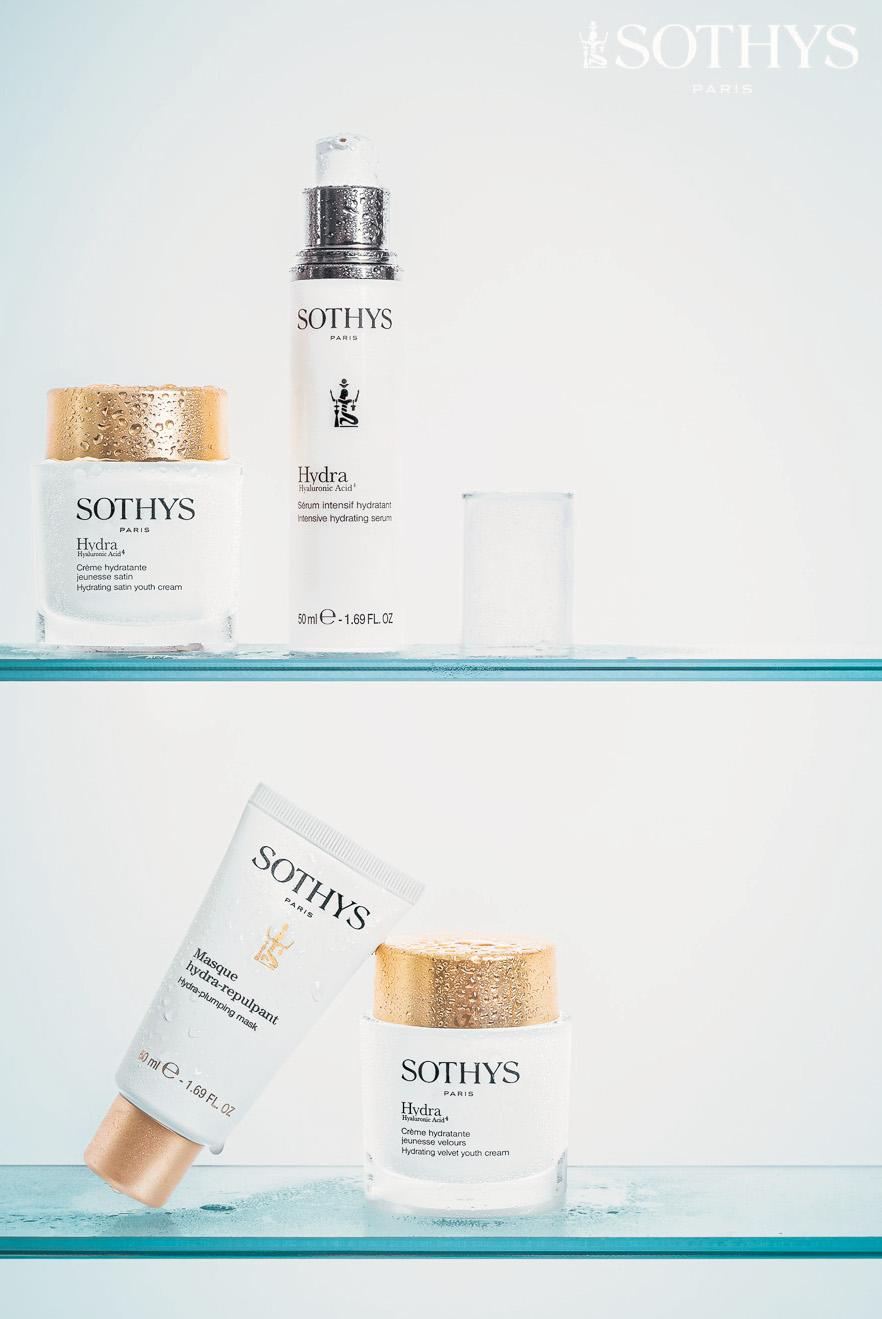
Based on its latest Advanced research discoveries, Sothys is now revealing its new Hydra Hyaluronic Acid4 hydrating range, composed of 4 sources of hyaluronic acid and 2 patented active ingredients derived from Sothys Advanced Research. A genuine concentration of innovation to act deep within the skin.
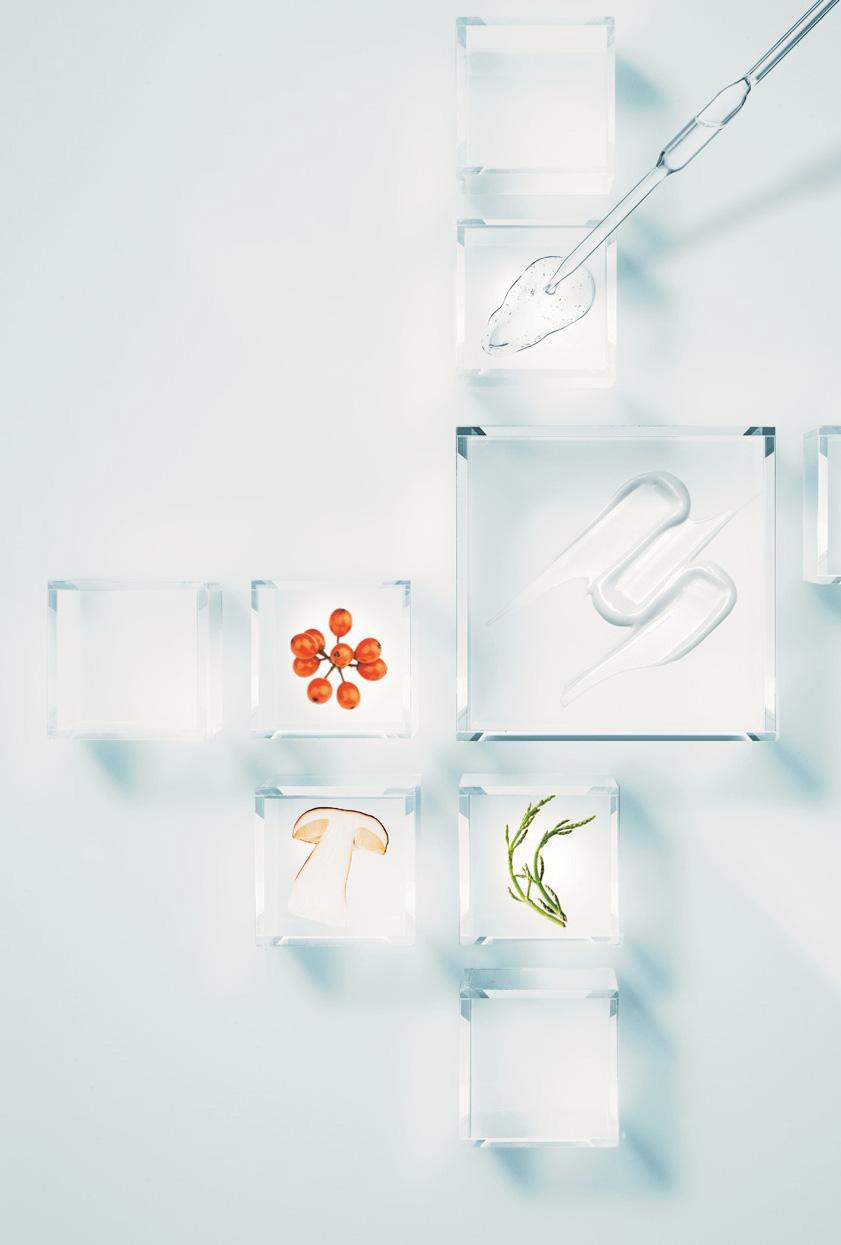
A new professional Intensive treatment and four products for home use to offer immediate, longlasting hydration through synergistic action. A new high-performance youth solution, because wellhydrated skin appears visibly younger and copes better with the passage of time.
Key Active Botanical Ingredients:
• 4 sources of Hyaluronic Acid. Sothys 1055 Boletus mushroom extract to reactivate the skin's hydric memory with a pro-youthfulness action. HPM Hyaluronic Acid to help form a protective film. BPM Hyaluronic Acid for rapid penetration for action deep within the skin. Micro Hyaluronic Acid
to quickly penetrate and deliver targeted regenerating action.

• Organic Rowan Berry peptides for a global action on the skin's barrier function
• Pea Extract rich in peptides to protect and maintain skin stem cells.
• Organic Samphire rich in vitamins and minerals to stimulate natural moisturising factors within the skin.
• Olive, Soybean and Pollen Extract to relieve sensations of discomfort and tightness.

INTENSIVE HYDRATING SERUM:
Designed to work like a skin architect, this intensive serum aims to lastingly boost hydration mechanisms. Its light-as-water texture is rich in liposomes and instantly melts into skin.
HYDRATING YOUTH CREAMS:
Designed to work like a protective shield against dehydration, these creams aim to immediately plump skin and reactivate its moisture memory. Results: Day after day, skin regains an optimal level of hydration, becomes soft, smooth, and visibly plumper, and is lastingly protected. A choice of 2
textures for an everyday customised approach: Satin cream for normal to combination skin and Velvet cream for normal to dry skin
HYDRA-PLUMPING MASK:
Designed to provide an instant burst of hydration, this mask also has a pleasant rich and enveloping texture. In minutes, skin is visibly plumper and smoother and the complexion glows once again. Results: Skin is intensely hydrated, supple, more radiant, comfortable and seemingly rejuvenated.
THE HYDRATING INTENSIVE TREATMENT:
The absolute hydration solution with 6 stages, exclusive Sothys-Paris Digi-esthétique® massage techniques, to quench, hydrate and plump the skin, renewing its youthfulness. This high-performance treatment combines 4 sources of hyaluronic acid with 2 patented Sothys active ingredients. It is recommended as a series of three treatments. Results: After the first treatment, 100% of people say the skin is hydrated, softer and more radiant.
For more information visit: www.orleanscosmetics.co.za
Les Nouvelles Esthetiques no’95 18
innovation



Getting Grounded
There’s a Chinese proverb that says, “When the roots are deep, there’s no reason to fear the wind.” This is the essence of grounding—feeling so solid and rooted in yourself that you don’t have to resist anything. The opposite of this is when we feel unsupported and thus disoriented or spacey, like an uprooted plant flailing about in a storm. When we are grounded, we are resourced—we feel we have the capacity and tools to deal with what comes our way.
Getting grounded can help shift us out of a state of high nervous system arousal or shut down into a state of being settled and present. We can feel grounded through our legs and feet or through any part of the body that is touching the ground, a floor, a chair, and so forth. We can even ground through our hands, and for people who use wheelchairs or crutches, grounding can happen through contact with mobility devices. The breath can also be something that grounds us and helps us feel more solid and stable.
Grounding Practice 1
Find a comfortable seated position. Bring your attention to the parts of your body that are touching the floor, or the parts of your body that are touching something that touches the floor—for example, a chair or cushion. Notice these areas— perhaps your feet, back of thighs, bottom, arms or hands. If your feet are on the floor, gently press them down and notice how your legs feel. Are they strong? Weak? Heavy? Light?
Feel your seat bones on the chair, or your back against the chair. Allow your spine to lengthen the more you ground down, just like a tree that is able to rise to the sun as it deepens its roots. As you bring awareness to the places in your body that are being supported by the floor or chair, notice if anything settles in your body or just generally feels better.
Grounding Practice 2
Cross your forearms in front of your body and squeeze your opposite arm with each hand. Gently squeeze your hands up the arms to your shoulders. Notice if anything settles in your body or your breath deepens and if there is a particular part of the movement that feels especially good.
Grounding Practice 3
Stand with your feet a bit wider than hip-distance apart and your knees slightly bent, or you may sit, tuning in to your seat bones. Start to sway side to side. Notice the shift in weight in your feet (or seat bones) and how your legs feel. Tune in to your muscles and how they engage as you sway. Notice if anything settles in the rest of your body as you get more grounded in your lower body.
GETTING CENTERED
When we are centered, our sense of self and our center of power is inside of us, regardless of what is happening around us. We have a sense of personal agency and self-efficacy in our life. Although we may not be able to control everything that is happening around us, we are able to manage our own emotions and behavior. When our center is outside of us, we feel and experience that our safety and well-being is at the mercy of external forces; we may feel powerless and helpless.
Reclaiming our sense of center takes time. Track your body in different interactions and notice if there are some situations where you are able to be centered and others where you’re not. Journal about it, write it down, and consider what centering practice might bring yourself and your needs into the moment. It’s important to remember that being centered is not the same as being self- centered; it’s about being centered in yourself. This actually allows us to be
By Hala Khouri
more present with others without needing to manage them. It can be a very generous act.
Centering Practice
This is a standing practice that can also be done seated. Stand with your feet hip-distance apart, or find a comfortable seated position. Place one hand on your heart or the center of your chest and the other hand on your belly or solar plexus. Your eyes can be open or closed—whatever feels better. Feel the sensation of your hands on your body. Imagine a flame or a sphere at your belly— anything that can symbolize your center of power. Take a few deep breaths if that helps you settle.
Next, lean forward and come up on your toes, as if you were about to fall forward, then lean back onto your heels, then go side to side. Explore how your center keeps you from falling forward or back and can allow you, even if you do fall, to come back again. If seated, simply lean in each direction and feel for how your body keeps you from falling.
Centering Practice With Visualization
Once you feel centered in yourself, imagine someone in your life standing near you. Notice if your capacity to stay in your center is harder in the presence of another person. As you see them, put more of your attention on your hands on your body and your centering image. Feel in your body what it would be like to be centered while in relationship to someone else.
From Peace from Anxiety: Get Grounded, Build Resilience, and Stay Connected Amidst the Chaos by Hala Khouri © 2021 by Hala Khouri. Reprinted in arrangement with Shambhala Publications, Inc. Boulder, Colorado.
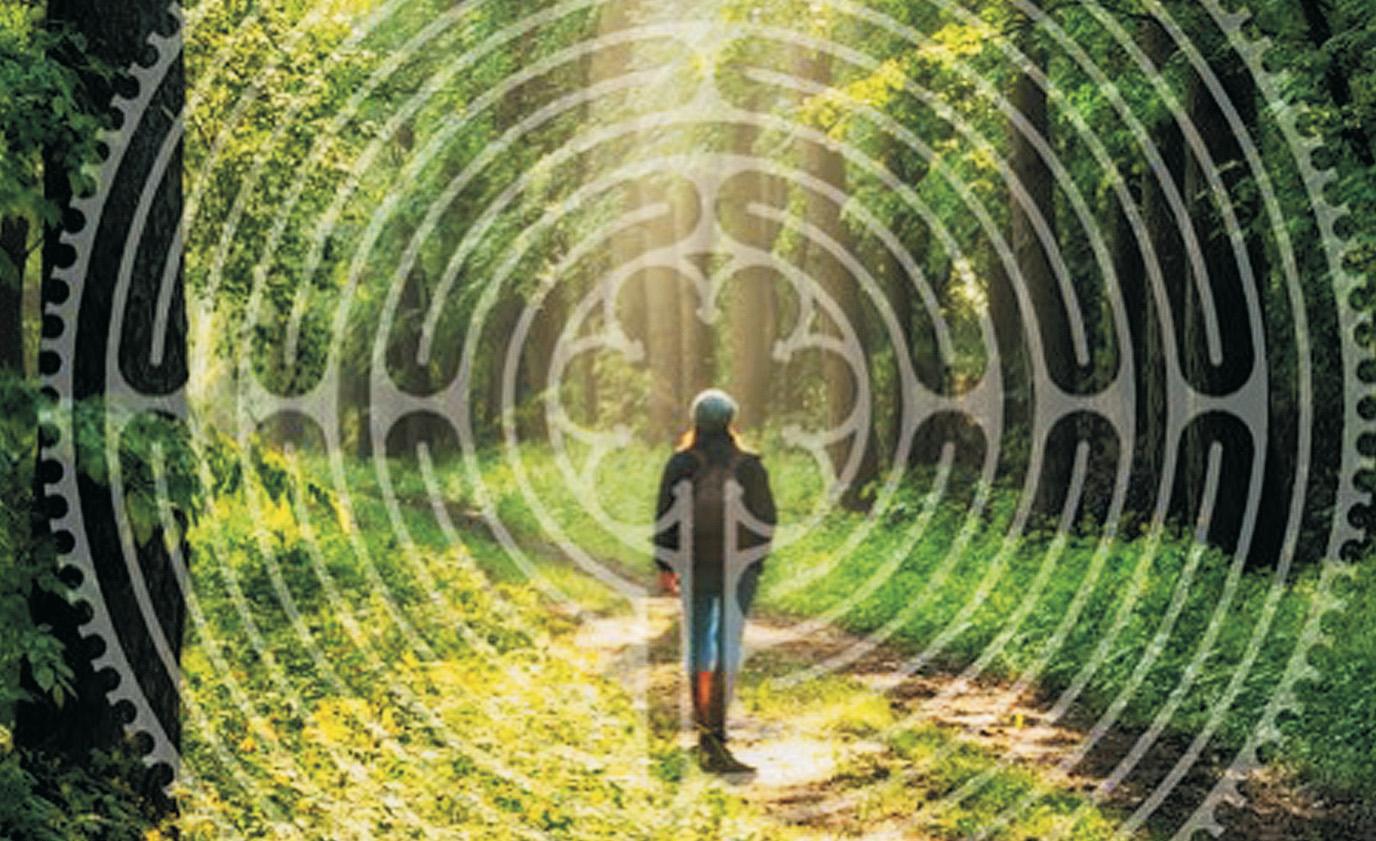
Les Nouvelles Esthetiques no’95 22
spa
therapies
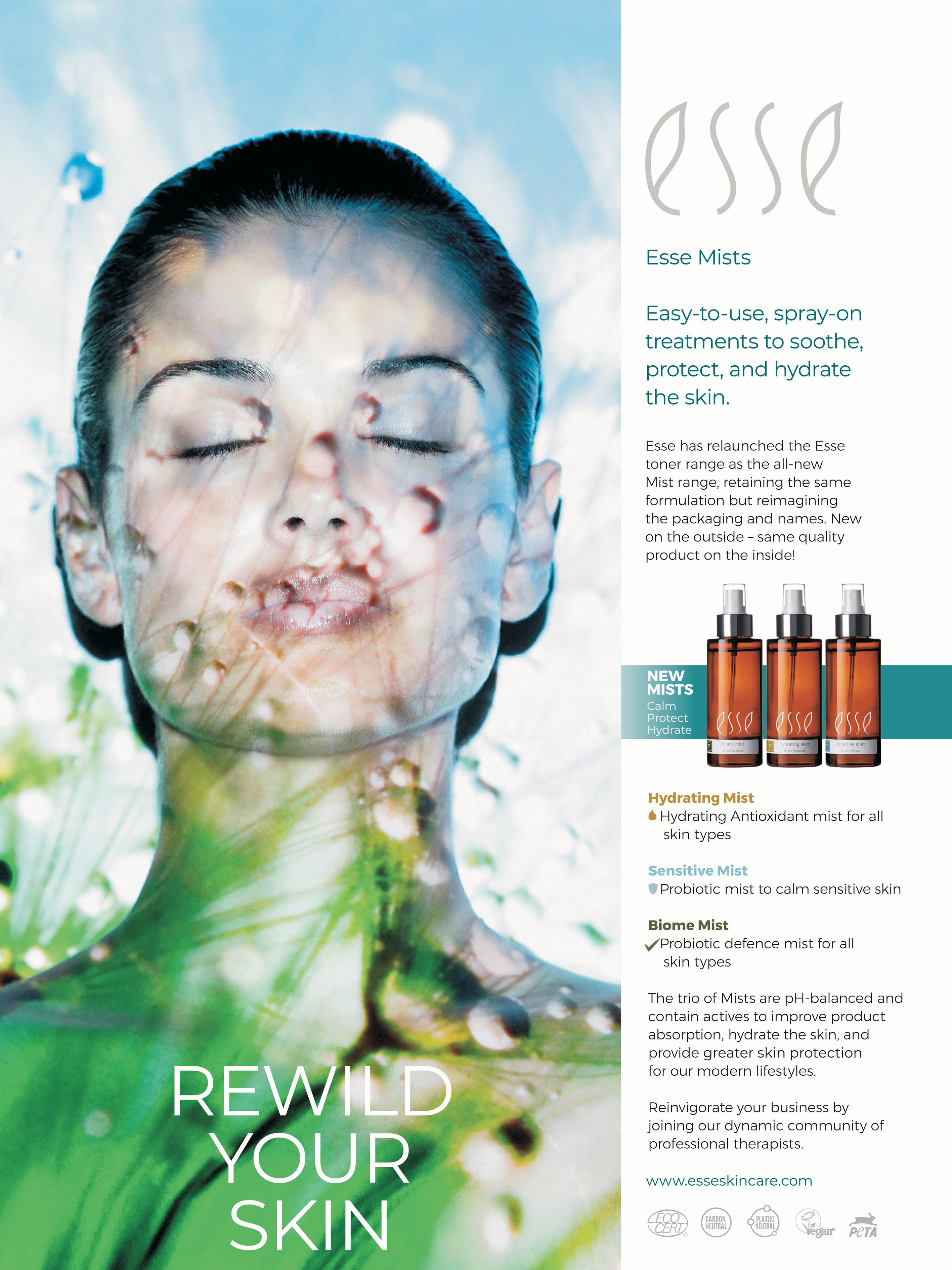
Enhance your Wellness Routine with a Little Salt Therapy
By Laura Powell
From salt stones and salt caves to salt rooms outfitted with walls made from pink Himalayan salt, halotherapy (“halo” means “salt” in Greek) has become very popular—and for good reason.

Halotherapy is said to be good for skin conditions such as acne and psoriasis and for chronic respiratory conditions including asthma and allergies. What’s more, it’s easy. You just sit, relax and inhale. All the while, you are breathing in mineral-filled microparticles that penetrate deep into the lungs. Non-inhaled salt particles are absorbed into the skin.
According to Ann Brown, the founder and CEO of Saltability, part of the seemingly sudden increase in interest in salt therapy is a result of COVID. As spas looked to add touchless services during the pandemic, salt rooms were a logical answer. Brown says that during the past few years, many spas have transitioned treatment rooms into salt suites. Even after the pandemic, these rooms serve as a steady revenue source, even with the challenges of staff shortages.
Brown also notes that the pandemic encouraged those who could afford it to bring more wellness into their homes. That’s why the demand for home halotherapy has been off the charts internationally. For those with smaller budgets, there are salt lamps.
The Salt of the Earth
As you drive by your local mall and notice the addition of a salt cave (there are even franchised salt salons now), or when you visit your favorite spa’s new salt room, you may wonder about the science of it all.
Even though it’s suddenly trending, halotherapy has been around for a long time. Ancient healers recommended salt inhalation for the respiratory system and other health issues. Scientific recognition of the power of dry salt therapy dates to the mid19th century, when a physician in Poland observed that the respiratory health of workers in a nearby salt mine was much better than that of people who didn’t hang out underground.
After that, salt cave therapy, or speleotherapy, became a thing in central Europe. Then, around 50 years ago, the first halogenerator was developed, allowing the indoor replication of the benefits of the atmosphere of salt mines.
A halogenerator is a device that converts pharmaceutical salt into microparticles. Those particles are dispersed into a salt room, where clients breathe in the benefits. While salt rooms are infused with pharmaceutical salt, salt walls are usually made from authentic Himalayan salt. Brown says the real
stuff contains more than 50 naturally occurring minerals, including magnesium, potassium and calcium. Resonating at the earth’s frequency, Himalayan salt seems to be a panacea, according to true believers, who tout its benefits, including:
•Supports a healthy respiratory system and sinuses
•Boosts bone health and prevents muscle cramps
•Improves circulation
•Improves the immune system
•Relieves anxiety and addresses insomnia

•Rejuvenates the skin
New Salt Outlets
According to Brown, halotherapy is moving beyond dedicated salt rooms and caves. For example, several spas she has worked with have updated their cedarpaneled saunas by pulling out the wood and adding Himalayan salt panels. Salt is also being incorporated in other spa treatments. For example, instead of lava hot stones, some spas are using Himalayan massage stones, which are heated and used to stimulate circulation, relax the body, lower blood pressure, soothe sore muscles and remove toxins. Salt tables are another innovation. They provide relaxation seekers the opportunity to rest directly on warmed salt, amplifying whatever treatment they are receiving.
Les Nouvelles Esthetiques no’95 24
spa therapies

innovation
Resa KahnFor The Love of Beauty
Dr Resa Kahn is the Founder and CEO of Asteria Pharmaceuticals and the For the Love of Beauty Initiative. She has had an illustrious career in the product development industry for the last 24 years. As a Biomedical Scientist specialising in Integrative Medicine and Anti-ageing Cosmetic Science, Resa has the perfect combination of knowledge and experience to guarantee our clientele very high standards of success.
Asteria Pharmaceuticals are also the manufacturers and owners of Biodermal Skin Tech. This is an avant-garde cosmeceutical range of skin and body care products. Resa’s work with Biodermal Skin Tech encompasses particular skin issues including ageing, pigmentation and fine lines. Biodermal products support skin health, skin tone and incorporate threading skin lifts to deliver a more youthful and lustrous appearance for our clients.

Q & A: The concept behind the For The Love of Beauty Initiative – Resa provides a safe and uplifting space where her clients feel nurtured, pampered and important. Her initiative winners are treated to a wonderful experience and are greeted with a glass of bubbly and a bunch of fresh flowers. She aims to lift their spirits and help them to see the beauty they possess. This platform is also used to support and promote other charities like Harties Feral Cat Rescue, My Walk School Shoe Initiative to name a few.
Q & A: The promise and motivation around the For The Love of Beauty Initiative - To continue to provided uplifting experiences to women and spread the message that all women are beautiful no matter their age or background. To Continue to promote affiliated charities.

Resa is passionate about making people feel seen, appreciated and worthy. Women tend to put others before them and neglect their own personal needs. The look in a women’s eyes when she feels beautiful is priceless!

Q & A: A hint on the future plans and goals – To be one of the sponsors of AACL Care and Protection Cape Town in the Cape Argus.

For more information or to enter the "FABULOUS AT 50 SOMETHING" National Make-Over Competition, and Stand a chance to WIN a MAKE-OVER worth R 50 000, Visit: www.biodermalskintech.com
@biodermalskintech @resakahnfortheloveofbeauty



7 CBD Treatments to Try

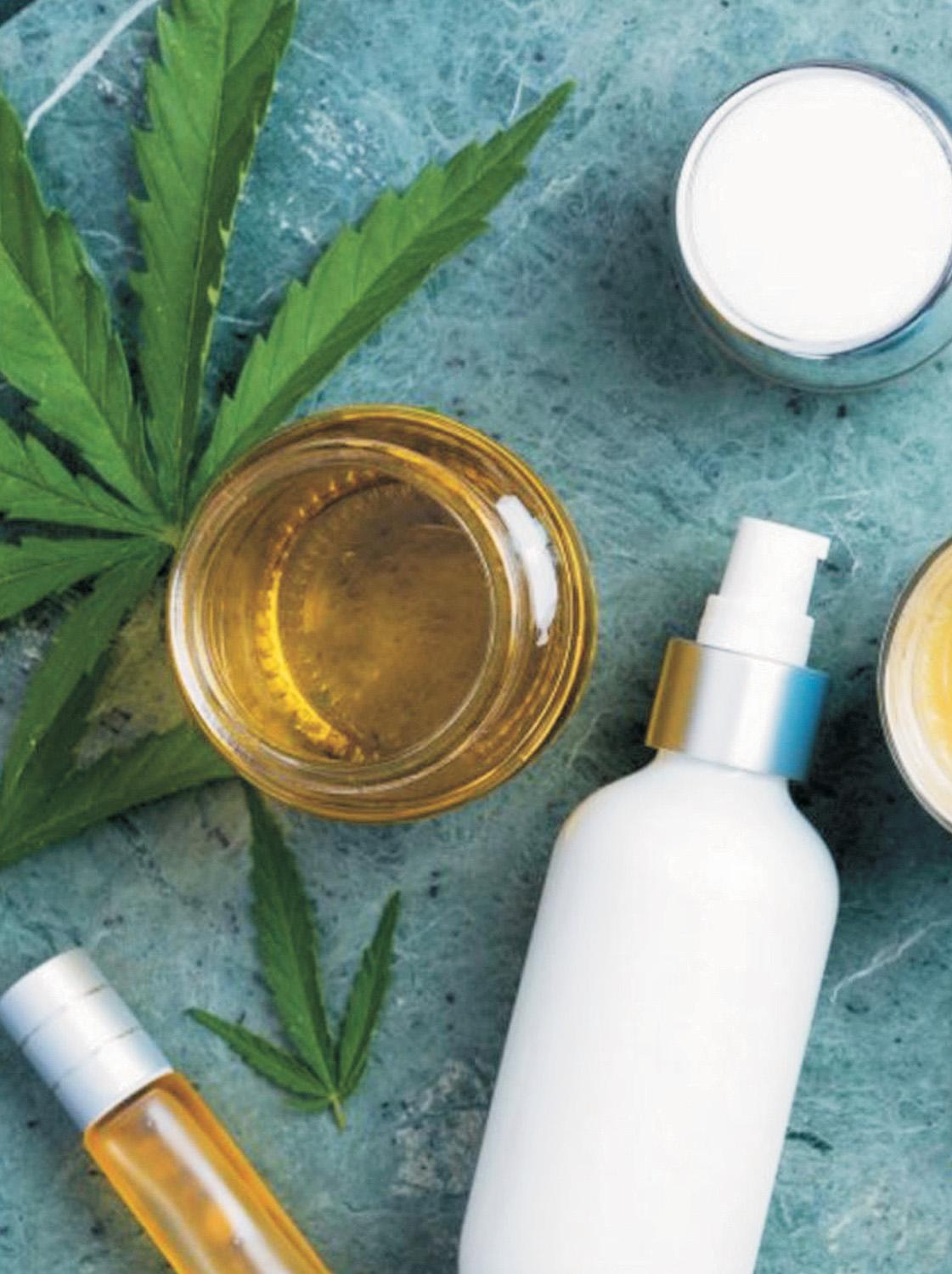 By Heena Paryani
By Heena Paryani
28
spa therapies
CBD spa treatments are creating a buzz in the wellness world, incorporating the rejuvenating benefits of cannabidiol and deep relaxation massage techniques.
Cannabis is a plant-based medicinal herb that has been used since ancient times but has only been proven medically effective recently. It is known to help ease anxiety, reduce inflammation, alleviate body pain, improve blood circulation, and much more.
Harvesting the medical benefits of cannabis is the latest trend in the wellness industry. Its chemical cannabidiol has made its appearance through CBD beauty products, CBD oils, CBD pills, and even CBD gummies. Most recently, spas across the world decided to take relaxation to the next level by incorporating CBD spa treatments in their menu.
How Do Cbd Spa Treatments Work?
Spas across the world have customized treatments to include the benefits of CBD in their sessions. While there are many different ways to do this, some of the most common ways they do so is through the following:
CBD Oils: CBD oils are a great way to soothe aching muscles. Even people with joint problems can use topical CBD oils for relief. These oils are sometimes mixed with other essential and carrier oils such as lavender or coconut oils to help reap the maximum benefits.
CBD Tinctures: CBD is also safe to ingest. Most spa’s will offer you a cup of tea with CBD tinctures to take your relaxation experience to the next level. While a plain CBD tincture usually has a grass-like, earthy flavor to it, when it is diluted with other ingredients like water or ginger, it usually masks the CBD taste.
CBD Aromatherapy: Besides using CBD topically and ingesting it, there are also great benefits of using CBD oils in diffusers, baths, and even saunas. When CBD vapor enters up the nasal passage, it is carried to the brain to allow the mind to truly relax and let go.
Taking Rejuvenation To New Heights
Spas have truly become a mind, body, and soul experience by incorporating the benefits of cannabis and deep relaxation massage techniques, allowing guests to truly recharge and reset before they step back into a normal routine-like world. Here are seven CBD treatments you can try now.
1. Anantara Bophut Koh Samui, Thailand
Anantara Bophut Koh Samui, apart from being one of the most sought-after wellness destinations in Thailand, is known for its enchanting spa. Their traditional Thai massages and western facials are an integral part of anyone’s visit to Anantara Bophut.
They’ve taken rejuvenation a notch higher by offering three different cannabis-infused treatments in their spa menu – namely the Restful Slumber Journey, The Cannabis Stress-Release Journey, and the Head to Toe Calming Journey.
Each treatment comes with a mix and match of traditional massage techniques incorporated with CBD. Their CBD program utilizes CBD blended essential oils, a CBD foot soak or bath, CBD infused herbal compress ball, and even a cannabis tea for total relaxation. www.anantara.com
2.
SchlossHotel Zermatt, Switzerland
Zermatt is a car-free village with some of the most stunning sceneries of the swiss alps. Visitors often make the trip to enjoy hiking trails, skiing adventures, and an active relaxation holiday. Considering how tourists often flock here to recharge, it comes as no surprise that Europe’s very first CBD spa is found here.
SchlossHotel Zermatt teamed up with SwissCBD in opening a CBD spa where after a full day in the active outdoors, guests are invited to leave behind all their worries and surrender to relaxation. There is not one but an array of CBD treatments guests can delight themselves with. From massages with CBD oils to steaming off in a CBD herbal sauna or taking a multi-sensory shower with CBD fragrances, these services allow visitors to enter a new dimension of relaxation. www.schlosshotelzermatt.ch
3. Ildi Pekar Wellness Studio New York, USA
New York-based celebrity aesthetician Ildi Pekar is known for combining traditional remedies with advanced high-technology machines. She is the go-to facialist for celebrities like Miranda Kerr, Lindsay Ellingson, and Irina Shayk.
One of her famous facials is the CBD Vibe Facial, which is a combination of electric stimulation, oxygen therapy, and her very own range of CBD products – including CBD tincture, CBD topical oil, CBD-infused exfoliating face polish, and a CBDinfused serum. Customers get to walk out of a treatment with visibly revitalized skin, lessened inflammation, and balanced PH levels in the skin amongst the other benefits. www.ildipekar.com
4. Bellacures Los Angeles, USA
If you thought that CBD treatments were limited to massages and facials, then wait until you see how your regular manicure and pedicures are given the CBD twist. Bellacures, a chain of nail spas across Los Angeles partnered with Kush Queen, by using their line of CBD-infused bath bombs, body scrubs, and lotions in their services, calling it cannicures. They even offer you a bar of CBD-infused chocolate to help you enjoy your pampering session from within. www.bellacures.com
5. Cliveden House, UK
Cliveden House is truly the depiction of opulence and luxury. During its 350-year history, Cliveden house has hosted members of the royal family and many notable politicians, celebrities, and artists. In the beautiful setting of the Cliveden Spa, set within secluded walled gardens, guests visiting the luxury country house hotel can now experience CBD treatments to discover a true sense of wellbeing and relaxation.
Cliveden has partnered with premium CBD brand OTO from the UK, in developing treatments that include overnight stays. The OTO sleep experience includes a personalized 90-minute OTO massage using powerful massage strokes, CBD, crystal placements, and music to help you rediscover yourself. It also includes a night stay, a sleep selection kit, pillow mist, along with either a 60minute private yoga or private sound healing session. They also offer spa days on selected dates of the year. www.clivedenhouse.co.uk
6. St Julien Hotel & Spa Colorado, US
It is impossible to speak of CBD spa treatments without mentioning one from Colorado, the first state in the US to legalize recreational use of cannabis.
The St Julien Hotel & Spa’s Ultimate Colorado Bliss CBD Treatment takes our pick. The treatment starts with a lavender scrub, followed by a CBD-infused body butter wrap, and a hot oil scalp massage with lavender oil. The treatment then continues with a 50 or 80-minute full-body massage with CBD oil to quiet the mind and relax the body. Finally, the treatment ends with a nice glass of CBD-infused tea. www.stjulien.com
The Best Beauty Accessories for Your Treatment Room and Retail Shelves
By Les Nouvelles Esthetiques - USA
A roundup of some of the best beauty tools for your treatment room and retail shelves! As we move forward, it’s essential to think of ways to elevate your client experience while keeping a safe distance from your clients. Incorporating these accessorise into your treatment rooms can eliminate some of that touch while adding a bit of flair to your treatments. It can also be a great way to promote these tools for your clients to use at home in between treatments!
Cryoglobes

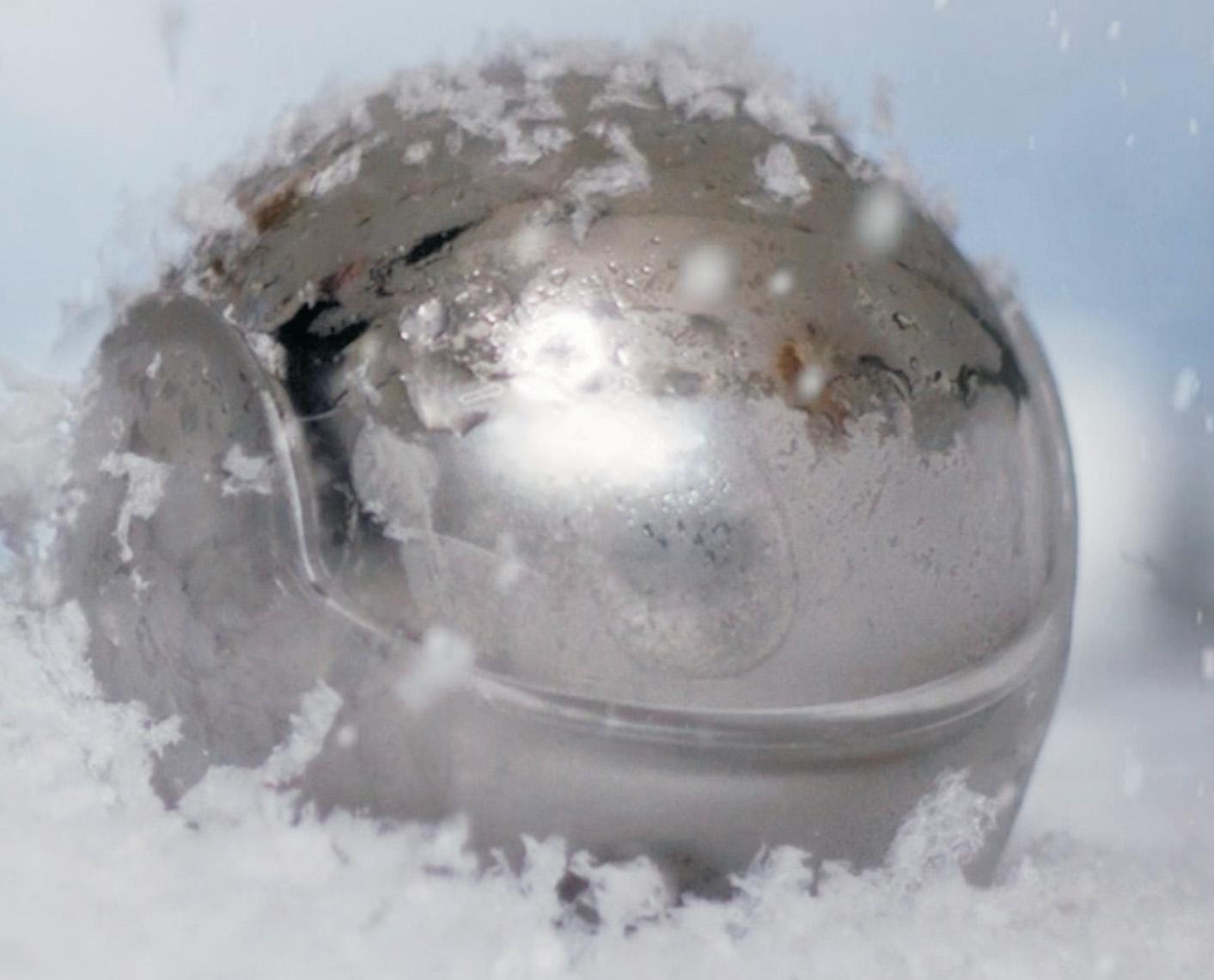
Smooth and tighten the skin with a refreshing cryoglobe facial using frozen, medical-grade steel globes. This duo tool encourages microcirculation and detoxification while reducing the appearance of pores, facial lines, and giving the skin a radiant glow. It is a great tool to use after peeling, dermaplaning, and microneedling.
Facial Rollers
Improve blood circulation in the face to make the skin look brighter and feel firmer. Facial rollers decrease puffiness, cools and soothes the skin, and allows for deeper product penetration! You can use it to lift the eyes, tone the cheeks, and firm the neck
& decollete. It is also a very popular trend amongst skincare lovers so adding these to your retail shelves is a no-brainer!
High-Frequency Machine
This device safely kills acne-causing bacteria while oxygenating the skin, increasing circulation, and reducing inflammation and redness. It uses an argon gas electrode to emit a small electrical current that generates oxygen to shorten your blemishes’ lifespan and prevent future breakouts. It is perfect for your acne-prone clients!
Ultrasonic Skin Scrubber
Face scrubbers help clear out dead skin and debris by exfoliating the skin through ultrasonic waves or high-frequency vibrations. It is used on damp skin to allow for the device to glide more easily. While it is available for at-home use, it is best used by aestheticians to prevent irritation and acne formation.
Gua Sha Stones
Increase blood flow, release tension, drain the lymphatic system, and tone complexions with Gua Sha – a skincare technique derived from Chinese
Medicine. These stones will not only give your clients an instant ethereal glow but help stimulate collagen production to reduce fine lines and boost skin elasticity!
LED Light Therapy
LED light therapy is a touchless treatment using varying wavelengths to treat different conditions like acne, inflammation, hyperpigmentation, and has incredible anti-aging effects. You can apply an LED for 30 minutes on the appropriate setting after exfoliation or extractions. You can also provide handheld LED devices for your clients to use at home to maintain your treatment results!
What are your favorite beauty tools to use in the treatment rooms and at-home!?
Les Nouvelles Esthetiques no’95 30
spa therapies

The Cold Hard Facts About Cryotherapy

People are paying top dollar to expose their bodies to temperatures not found on Earth for one to three bone-chilling minutes while stripped down to their swimwear or birthday suits and sporting gloves, socks, and sometimes other protective accoutrements. In Antarctica, the coldest temperature ever recorded was measured by a satellite at -135.8 degrees F, while liquidnitrogen - cooled cryochambers range between 150 to 300 degrees below zero. When exposed to such frigid temperdtures, we’re thrust into survivdl mode: the brain sends the majority of the body’s blood to its core in an attempt to keep it warm, and receptors prompt the nervous system to release endorphins—those feel-good chemicals that help diminish pain while triggering positive feelings. After exiting the chamber, the ensuing rush of blood ostensibly rids the body of toxins and rejuvenates it at the cellular level.
Whole-body cryotherapy (WBC), which has not been approved for medical use by the U.S. Food
and Drug Administration (FDA), claims to reduce inflammation, cellulite, anxiety, headaches, and even depression. Early adopters include professional athletes, who traded ice baths for cryotherapy to help ease their aches and pains. Now, celebrities are hopping on the bandwagon: A single cryotherapy session is reputed to burn up to 800 calories and help with anti-aging and weight loss. Cryotherapy is also popping up in spas across the country, from cryotherapy facials to whole-body cryotherapy treatments.
Despite its recent popularity, cryotherapy is far from new. According to “History of Cryotherapy” in Dermatology Online Journal (2005) by Anatoli Freiman, M.D., and Nathaniel Bouganim, M.D., of the McGill University Health Centre Division of Dermatology (Montreal), the Egyptians used cold to treat injuries and inflammation as early as 2500 BCE. Following World War II, liquid nitrogen became commercially available, and over the years,
By Kristin Vukovic
cryotherapy has become a well-established treatment for a wide variety of benign and malignant skin lesions. Today’s whole-body cryotherapy, developed in 1978 in Japan to treat rheumatoid arthritis, involves entering a chamber of liquid nitrogen, which tricks the body into hypothermia. Scientists in Germany and Poland further developed cryo (cold) procedures, and in 1989, the third cryochamber in the world was created in Poland. The treatment quickly became commercialized and popularized among athletes in Europe.
Cold Hard Facts
There is a dearth of cryotherapy studies in the U.S., because the majority of research has been done in Europe and Japan, with studies focusing on the benefits for patients with rheumatoid arthritis, a chronic inflammatory and destructive joint disease. The first randomized controlled trial of whole-body cryotherapy was conducted in Finland in 2006: 60
Les Nouvelles Esthetiques no’95 32
spa therapies
patients with active rheumatoid arthritis were recruited and received localized and whole-body cryotherapy treatments and conventional physiotherapy. Pain decreased in all treatment groups, but most markedly in the whole-body cryotherapy group, where patients had two to three daily cryotherapy sessions at -110 degrees C for one week.
In addition to treating inflammation and pain, cryotherapy may play a positive role in treating patients with depression and anxiety disorders. A 2008 study in Poland found that the decrease of anxiety and depressive symptoms were significantly higher in a group of patients who were exposed to daily cryotherapy. The study group was treated using a series of 15 daily visits to a cryogenic chamber (-110 to -160 degrees C), which lasted two to three minutes each, in addition to standard outpatient psychopharmacotherapy. A control group with similar symptoms also received psychopharmacotherapy, without cryotherapy treatments. These findings suggest a possible role for whole-body cryotherapy as a short-term adjuvant therapy for depressive and anxious patients.
Frozen Future
While cryotherapy was slow to come to the U.S., body-conscious consumers have quickly adopted it. KryoLife (New York City), which opened in 2012, offers whole-body cryotherapy sessions. The sessions use protocols that have been developed over 25 years of using the modality in Europe and include a treatment in a cryosauna or cryochamber, as well as a 10-15-minute warmup on cardio equipment. While every session is beneficial and provides immediate results, CEO Joanna Fryben recommends a minimum of 10 sessions to see cumulative benefits. “My friends—athletes—were using the therapy back in my native country of Poland,” says Fryben. “I became more familiar with it when my mom had a knee-replacement surgery and used the therapy for pain relief and as a part of her physical therapy. She absolutely loved the results. I did a lot of research and interviewed many doctors and people who used the therapy in Europe before I decided to introduce the modality on the USA.” KryoLife is a distributor of Juka Cryosaunas and an exclusive distributor of KrioSystem Life. “The reason we use and sell their equipment is because unlike other devices available, they have European medical and quality certifications,” she says.
Athletes swear by cryotherapy because of its healing benefits and lack of recovery time. Fryben explains that unlike an ice bath, which does not affect the nervous and endocrine systems, cryotherapy positively impacts our nervous, endocrine, and immune systems. “Whole-body cryotherapy is much more potent, of much shorter duration, and much more comfortable for the user,” she says. “After an ice bath, an athlete should take a rest for the remainder of the day, but after whole-body cryotherapy, one is encouraged to exercise. The therapy increases neuromuscular connection, so the movement is more efficient. After an ice bath, muscle loses its capacity for some time.” Plus, with cryotherapy, guests don’t get wet.
Golfers are getting in the game, too. In April 2015, The Spa at Sea Island (GA) started using Impact Cryotherapy equipment. “We were exposed to the
Impact unit because one of our members is a cofounder of the company,” says spa director Ella Stimpson. “We did a test with the professional golf community in our area, and it was a big hit. So when crafting a program that was primarily focused on golfers and other athletes, it made perfect sense to include a groundbreaking new technology to tackle pain, flexibility, and inflammation.” Stimpson explains that obtaining a full understanding of the guest’s medical history is important, because there are a few conditions that are contraindicated and some that require less extreme temperatures and time. “We want to understand their full training and therapeutic concerns so we can craft not only a great cryotherapy session for them but also build a recurring program around their lifestyle that will impact their game and quality of life,”she says.
Spas and wellness clinics across the globe are striving to provide guests with the most effective programs, and incorporating cryotherapy as a part of the treatment plan is becoming increasingly popular. Thermes Marins Monte-Carlo (Monaco), a wellness and preventative health center, started offering cryotherapy to its guests in November 2014. “Cryotherapy is truly an amazing treatment with so many benefits,”says general manager Christine Zoliec. She explains that the cryotherapy treatment triggers a series of reactions in the body. “At the end of the session the body will take 20 to 30 minutes to recover the skin temperature, then the guest will start to feel effects. Within three minutes, a session helps to treat muscle and inflammatory diseases but can also help recovery from jetlag, help fight against sleep disorders, and has an anti-stress and anti-aging effect,” says Zoliec. SHA Wellness Clinic (Alicante, Spain) has also offered cryotherapy since 2014. “We are constantly trying to innovate and offer both conventional and alternative therapies,” says head of internal medicine and anti-aging Vicente Mera, M.D. “Whichever ancient or novel therapy might improve our patients’ wellbeing, if it is safe, then we try to implement into our general or more specific therapeutic program.”
Face Freeze
As more technology is developed to localize cryotherapy treatments for the face and neck, spas are expanding their cryotherapy offerings. Additionally, with smaller, less expensive devices, more spas can afford to offer the therapy to spagoers. At Skintology Skin and Laser Center (New York City), guests can experience the CryoCure Facial. “A controlled beam of vaporized liquid nitrogen is used to freeze the skin of the face, scalp, and neck area,” says owner Yevgenya Freylikhman. “The cold nitrogen produces an instantaneous tightness in the skin, filling in fine lines and wrinkles. Collagen is activated to produce more cells, causing skin to become more elastic over repeated use.” The treatment flushes away built-up toxins, soothes inflammation and eliminates puffiness.
Cryohealthcare was among the first companies to bring cryotherapy to the U.S. in 2009 after discovering it in Germany, and they have sold approximately 200 cryotherapy units nationwide. Medical director Jonas Kuehne, M.D., developed the Cryofacial, a treatment where gaseous nitrogen is applied to the skin with different levels of pressure.
“Cryofacials have been done in the past by soaking gauze in liquid nitrogen and placing it directly onto the skin of the face,” says managing director, Emilia Kuehne. “However, this treatment brings with it the risk of overexposure and possible burns, as it is difficult to apply the soaked gauze evenly to the skin. Our method allows very even cold exposure to the face in a controlled manner.” In addition to full-body cryotherapy and local cryotherapy, Chicago CryoSpa offers the Cryofacial. “When we had the opportunity to be the first destination outside of Los Angeles to offer the Cryofacial, we jumped on it right away,” says founder Jim Karas. Chicago CryoSpa was conceptualized by Karas and opened in July 2013 after a personal experience. “More than three years ago, I woke up with a partially torn Achilles,” he says. “I tried every conceivable treatment but with no luck. I was giving a speech and taping numerous television segments in Los Angeles, and a friend recommended cryo. After five days of the cryosauna, followed by five days of the local treatment directly on the injured area, I could run across the street. This was after eight months of limping. I came home, rented the space, and bought the equipment. It was the fastest business decision I have ever made.”
Primary Precautions
Cryotherapy should always be administered by trained professionals who screen for current and past medical conditions, including heart attack or stroke, high-blood pressure, pregnancy, seizures, blood-clotting issues, infections or fever, a pacemaker or other implanted medical devices, and Raynaud’s disease, which causes some areas of the body to feel numb and cold in response to cold temperatures or stress. Even with proper screening and precautions, more high-quality research is needed. Safety is a priority for cryotherapy companies. KryoLife selects and trains technicians to the medicalgrade safety standards.“There have not been reported cases of any negative impact of wholebody cryotherapy,” says Fryben. “It is much safer than a hot sauna. However, the protocols, some precautions, and common sense should always be applied, and we are very strict about them at KryoLife. The treatment should always be supervised.” At Cryohealthcare, clients wear socks, gloves, shoes, underwear, and face mask in order to prevent irritation or injury to areas of compromised blood circulation during cold exposure. “We adhere to all European standards and added some of our own,” says Kuehne. “A first-time treatment may not exceed two minutes, and maximum treatment time for whole-body cryotherapy is three minutes.”
It is imperative to have trained therapists who never operate machines alone and nitrogen monitors that ensure levels are within safe parameters — breathing too much nitrogen can deplete the oxygen supply in the blood, which can be fatal. Facilities should also have a defibrillator and emergency kit onsite and provide CPR training to employees. Even with precautions, side effects can occur: moisture on the skin or clothing could freeze and cause frostbite, and cold intolerance and temporary nausea are possible reactions to the treatment.
However, the many benefits of cryotherapy provide yet another reason for spa-goers to chill out.

The Healing Gifts of Silence
On the spiritual path silent mind is associated with inner peace, calm, and quiet. Yet these qualities, desirable as they sound, barely hint at what a silent mind is capable of. Particularly in these difficult times, everyone should realize that silent awareness has the ability to heal. Let’s go deeper into why this is true.
Silent mind, which is experienced in meditation, is about reconnecting to your source. Everyone relies on the top layer of the mind, which is active, constantly thinking and feeling. But when the active mind gets fixated on anxiety, alarm, loneliness, and uncertainty, the active mind cannot pull itself out of these fixations. Mental activity becomes useless to heal itself, just as a runaway car cannot apply its own brakes.
What is needed is a reset. The reset isn’t just mental. Your thoughts are received by every cell in your body, and in turn all kinds of processes are affected—the immune response, hormonal cycles, sleep, and overall mind-body balance, or homeostasis. If the active mind becomes confused and chaotic, balance is disrupted everywhere. What to do?
Centuries ago, in every culture, a deeper level of mind was discovered, and the usual expression surrounding this level, which is silent, calm, and undisturbed, became religious, as in the Old Testament injunction, “Be still and know that I am God.” If we replace God with “your source,” the message comes through to modern ears: Be still and know that I am your source. The most direct result of heeding this message would be to meditate, because meditation gives direct access to silent mind.
But countless modern people have tried meditation, and they do not experience the kind of reset that is needed in a crisis. Partly this is due to lack of commitment; the average person has tried meditation and left itbehind, or only meditates when a sort of psychological Band-Aid is needed. Let me look a bit deeper to show what has been missed, because silent mind is truly the only healer.
By Deepak Chopra, MD
In medical school homeostasis is described as basically physical. If you go for a run, your heart rate, respiration, blood flow to muscles, digestive process, etc. are thrown out of balance, but once you stop running, homeostasis is restored. At the negative end of experience, if you experience a great shock, the fight-or-flight response throws you into extreme imbalance, but when the shock ends, balance is restored. The usual stress response is designed to last no more than a few minutes. Extended to days and weeks, it turns on itself and begins to create damage.
The damage first appears psychologically. Under constant stress, people feel tired, grumpy, depressed, anxious, irritable, impatient, and so on. Keep up the pressure, and the next stage is fatigue, lethargy, dullness, and depression. If the stress still doesn’t abate, physical symptoms start to develop, often beginning with insomnia as the result of hormonal interactions being thrown out of whack. There is a lot more to say about this, but the bottom line is that a holistic reset is needed.
Without noticing it, you have been holistically resetting yourself for your entire life. Homeostasis isn’t just physical; it involves the whole person. The command center for resetting the whole person isn’t found in our cells, not even our brain cells, and it isn’t found in the active mind, which is just the top layer. The command center for holistic resetting is at the source.Be still and know that I am your source.The evidence for this has existed for decades. Meditation affects heart rate, respiration, brain activity, inflammation markers, and stress levels. Medical science studies each of these factors individually, but we shouldn’t miss the forest for the trees. Everything comes back to the same source.
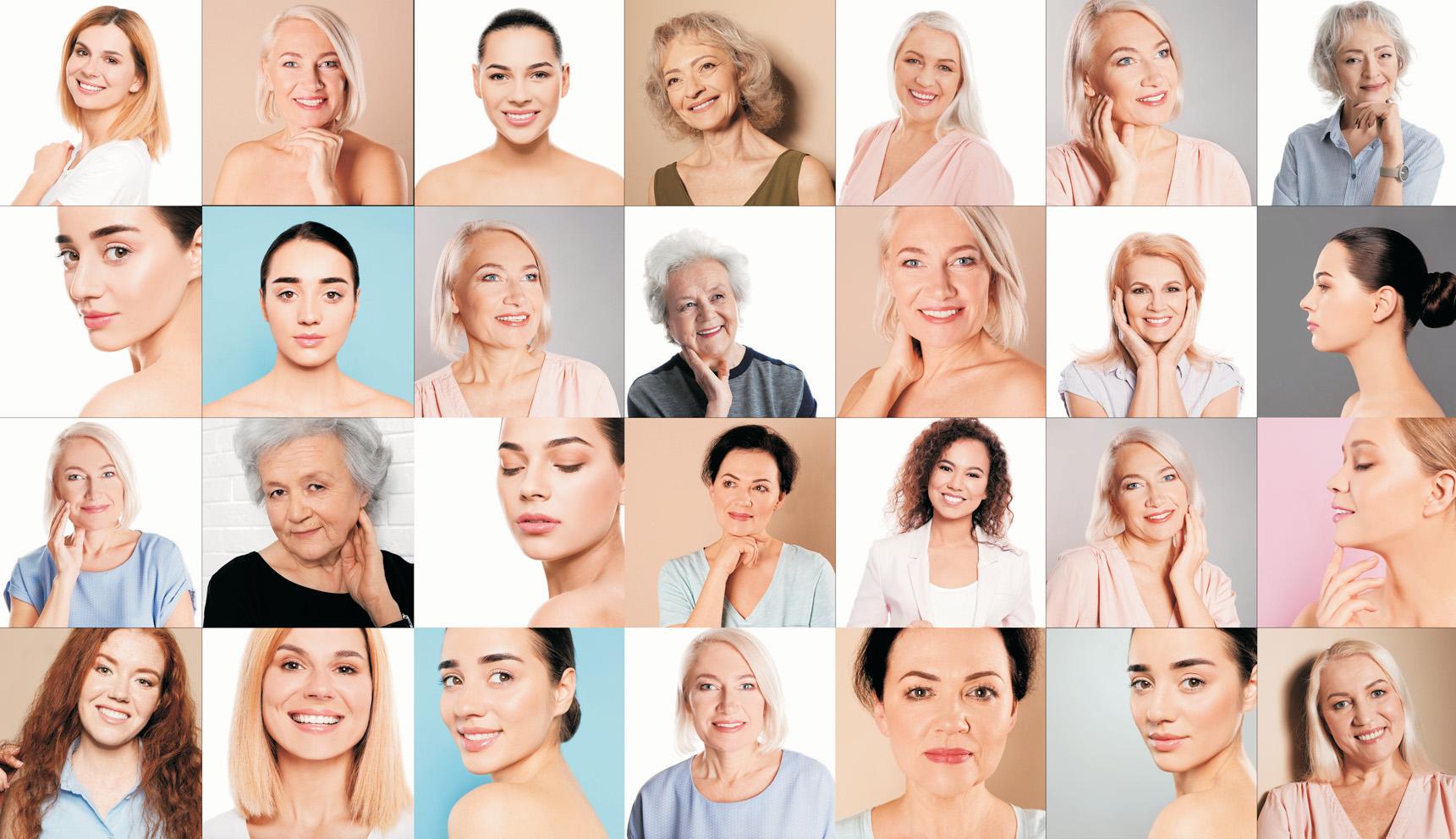
Your source is still and silent; you come closest to it in deep, dreamless sleep. But in a crisis, everything doesn’t automatically go back into balance the way your heart rate will return to normal after you quit running. It turns out that there is useful silence and not-so-useful silence. As consciousness starts to move from its silent source, different paths open up, and
the paths you have favored become your unique way of turning silence into something else.
Nobody handed you a user’s manual, but in broad terms, silent mind takes a path that is either/or. Let me map how these pathways diverge.
Fear or love
Separation or unity
Suffering or bliss
Renewal or habit
Self-esteem or self–doubt
Security or insecurity
Comfort or stress
Acceptance or resistance
Awareness or unconsciousness
These choices arise from silence; they have the same source but travel in opposite directions. If a person is fully conscious or awake, the pathways are directed toward the desirable experiences of love, security, bliss, creativity, renewal, and so on. But as things stand, we are all entangled in a web of choices that are mixed. We suffer but also feel bliss; we love but also fear; we feel self-worth but also self-doubt.
A crisis throws us into deeper confusion as it entangles us in too many wrong responses. Healing consists of allowing the silence to go in the right pathways. In every spiritual or wisdom tradition, pure consciousness unfolds, if let alone, in the direction of love, creativity, renewal, and evolution. There is no injunction that says, “Be still and let’s see what happens” or “Be still and who knows how that will work out for you?
Instead, the mindbody balance we all have relied upon since infancy is directed positively. Health and wholeness are the norm; creativity and renewal are the norm.
Without a doubt everyone recognizes the need for a rest. Follow this need toward your source, and it will be fulfilled. This is a time when the rest brings into play the infinite power of consciousness. All we have to do is align ourselves with that power at the level of silent mind.
34
spa therapies

Shamans, Sweat Lodges & Spas
By Laura Powell
From saunas to steam rooms to hot springs to sweat yoga, sweating is a mainstay of spa and wellness.
However, sweat lodges take sweating to an entirely new level and a sweat lodge experience led by a shaman can be a transformative experience. Temazcal sweat lodges, which mean “house of steam,” date back to Mayan and Aztec cultures but these adobe huts are more than just ancient saunas. Learn why Temazcal is both a ritual and a wellness treatment, and how the trained healer (Temazcalera) guides a spiritual journey designed to care for the body and nurture the spirit.
What’s Old is New
Steam rooms and thermal bathing, Finnish saunas, Russian banyas, Native American sweat lodges, Turkish hammams, and Japanese onsens are all rooted in cultural traditions that are popular with inthe-know spa goers. Temazcal has its roots in preColombian civilizations and beliefs, and while each 30-minute to two-hour Temazcal is a unique experience, the sessions have common elements.
Although sweat lodges vary in size, a Temazcal is a smaller, closed structure. According to the Spafinder Trend Report, a wood fire near the Temazcal heats volcanic stones, which are placed in the dome’s center. The temperature in the Temazcal rises, much like a sauna, and water poured upon the stones fills the dome with steam. As pores open and circulation improves, the Temazcalera leads a small group
through a ritual aimed to connect them with powerful forces of the physical and spiritual world. After the session, participants report they emerge purified, cleansed and healed.
Why Temazcal Ceremonies Are Unique
The temazcals are typically dome-like structures made out of cement, mud, or volcanic stone. At the start of the ceremony, people are asked to step into the sweat lodge and get comfortable where they will typically sit in a circle or a semi-circle. Once the participants are settled in, steaming volcanic stones are placed in the middle of the circle. Water is then poured over these stones to produce steam for the sweat lodge.
The rocks used during the ceremony are heated just outside the structure before the ceremony starts. As the ceremony goes on, more hot rocks will be brought into the dome, at intervals, to keep the space hot.
In some cases, the water thrown over the rocks is infused with herbs that are thought to have healing and therapeutic properties.Some people might even drink some herbal tea while inside the temazcal.
When the ceremony is over, you’ll be asked to exit the dome and you might be directed to take a cool shower or a dip in a pool to lower your body temperature.
Benefits of a Temazcal
Temazcal has proven to have many benefits. You might notice clearer skin and an improvement in weight loss efforts. Some other benefits include:
• Improvement of depression symptoms: A study on the effects of thermal therapy on people with mild depression, found that thermal therapy might help improve symptoms of appetite loss and other complaints in people who have mild depression.
• Removal of toxins from the body: Temazcal ceremonies are thought to help cleanse the body of toxins and impurities. Research shows that sweating has excellent potential in facilitating toxin removal.
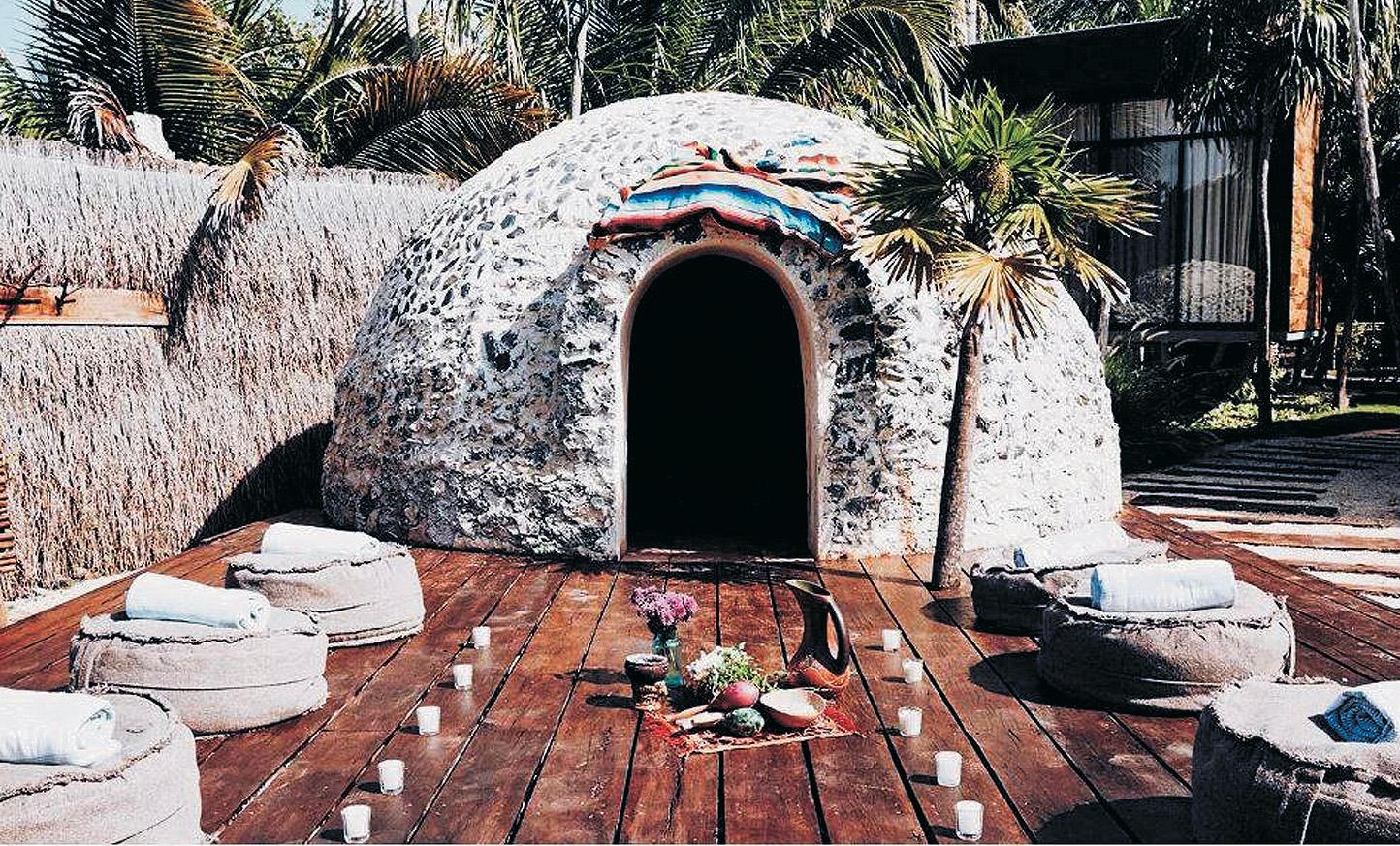
Where to Find Temazcal & Authentic Treatments
Many spas throughout Mexico offer traditional Temazcul experiences. Notably, Barceló Maya Grand Resort has a Temazcal that pays homage to the spa’s surroundings and Mayan heritage.
If you’re looking for authenticity but not quite ready to try Temazcal, the welcome area of the Skaná Spa at Turning Stone reflects a traditional longhouse. In addition, the spa menu includes treatments that are inspired by American native culture and healing principles. The Grand Velas Riviera Maya offers Mayan-inspired treatments and is a short distance from the Mayan civilization archaeological sites of Xcaret, Chichen Itza, and Tulum.
Les Nouvelles Esthetiques no’95 36
spa
therapies
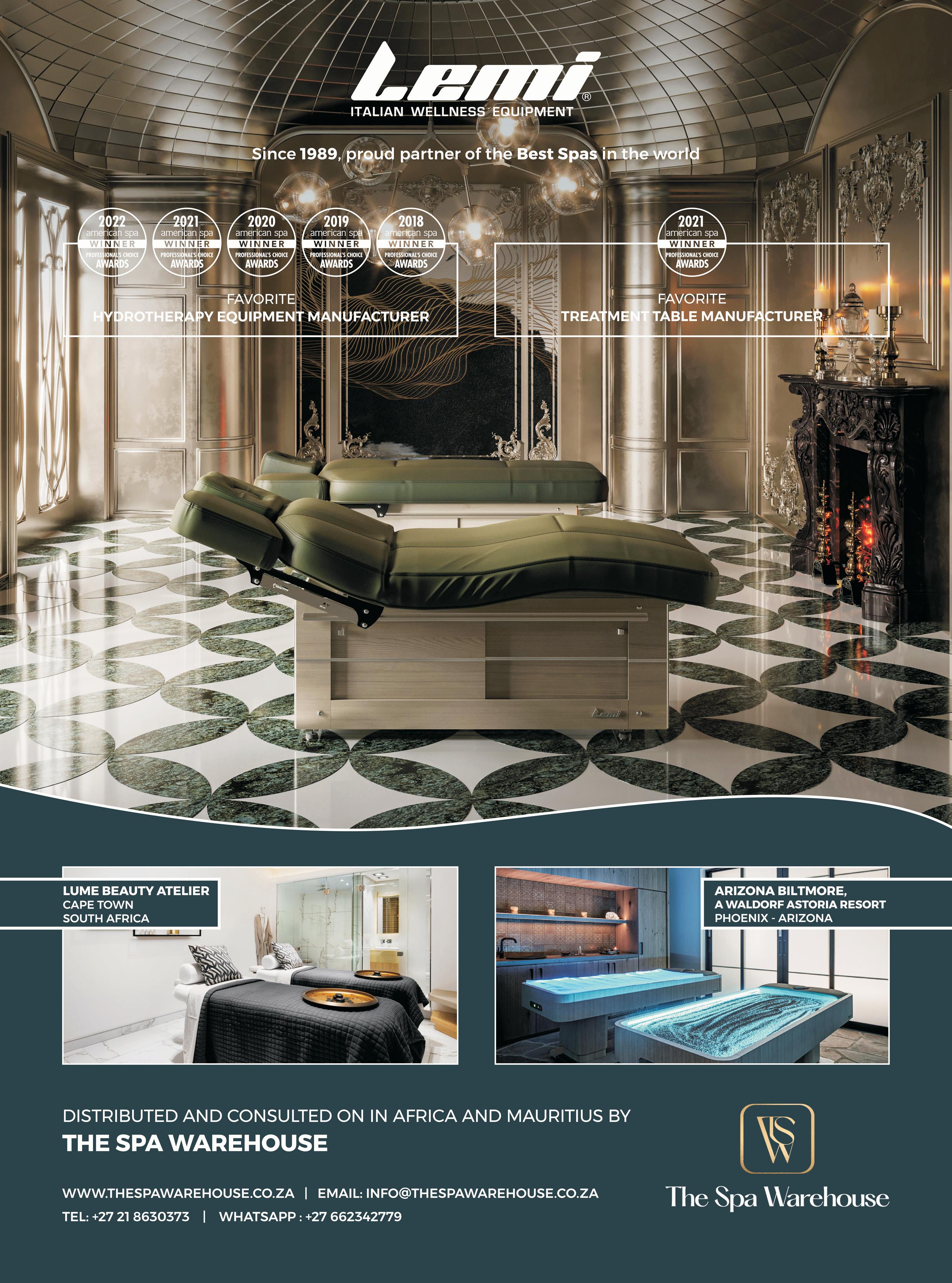
30 Massages From Around The World
By Cameron Aubrey
Massage is a practice that has been performed since ancient and medieval times. Many of the different massage types you see today originated from ancient civilisations including China, Japan, India, Egypt, and Greece, and were performed to induce a number of different bodily responses. Every type of massage offers a different historical and cultural experience.
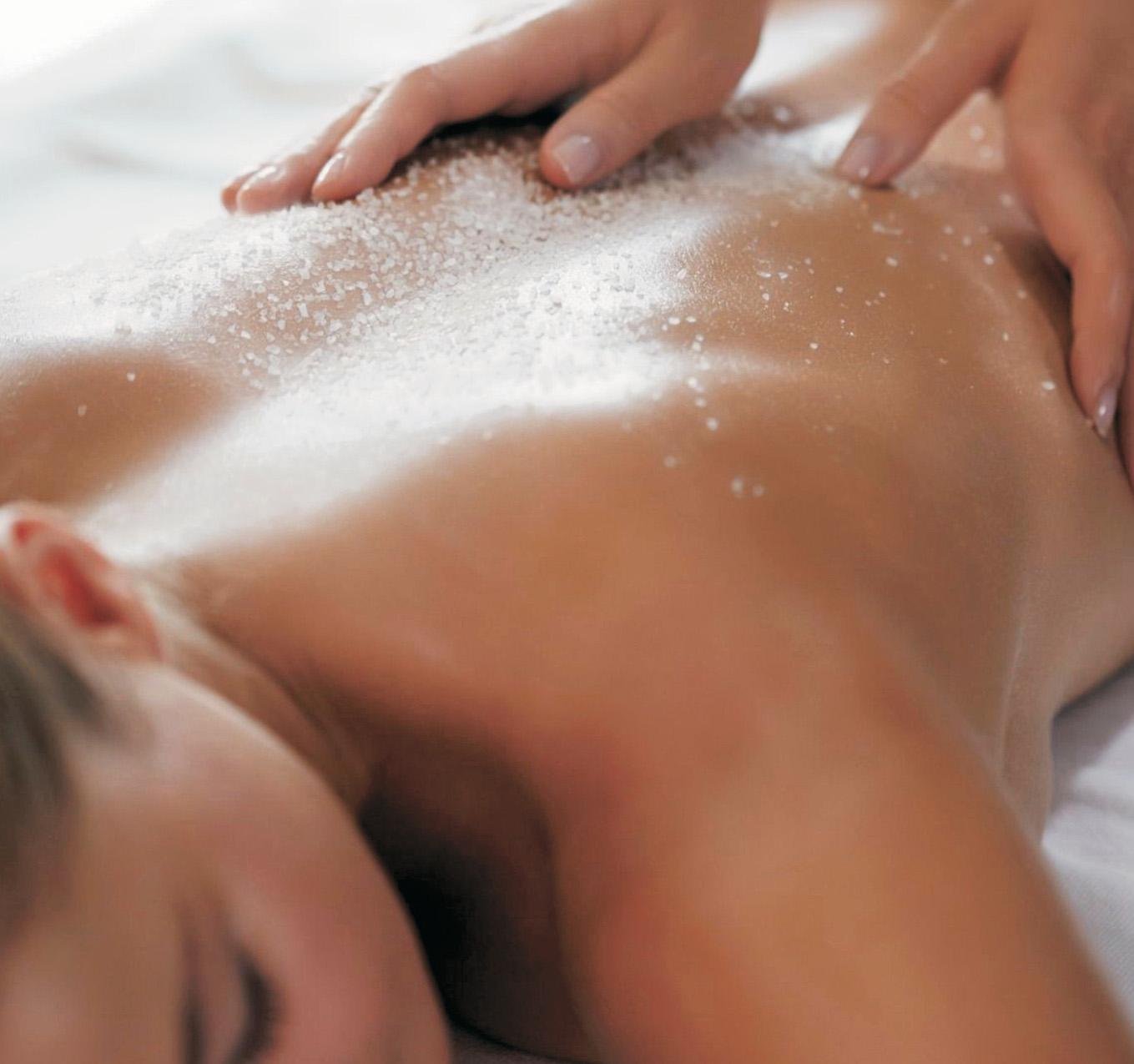
Depending on where you’re having the massage, the practitioner might use their hands, fingers, forearms, elbows, and sometimes even knees and feet! A range of facilities, equipment, and supplies may also be used, with everything from your standard massage tables and chairs to warm-water pools, lotions, and even stones or rocks.
With all those differences in mind, here are 35 different massages from around the world.
1. Acupressure – China
Acupressure is a traditional Chinese healing method that is thousands of years old, derived from the practice of acupuncture. Acupressure is very effective at treating tension-related ailments such as headaches, backaches, muscle aches, eye strain, neck pain, sinus issues, arthritis, and tension due to stress. Acupressure also aids in the removal of toxic wastes and increases your energy levels and overall feeling of wellbeing.
2. Acu-Yoga – China/India

Acu-Yoga blends two holistic methods of natural healing; acupressure from China and yoga from India. It is an active-movement massage that balances the body’s energy, improves muscle tone, increases blood flow, and stimulates healing.
Technique: Breathing and gentle stretching of the muscles occurs via yogic relaxation, reducing muscle
tension. Yoga asanas stimulate acupressure points, helping to open the body’s energy centres and relax problem areas.
3. Amma – Japan
Amma or ‘anma’ is a traditional Japanese massagthat has its origins in China. It’s an energybalancing/therapeutic deep tissue massage that is over 5,000 years old, based on the principles of Chinese Traditional Medicine. Amma restores your body to its optimal function by loosening your muscles, joints, and connective tissues, while also strengthening your nervous, cardiovascular, and respiratory systems. An Amma massage targets and relaxes both your body and mind to create balanced wellness.
Technique: A combination of pressing, stretching, stroking, and percussion manipulations are involved, along with smooth, fluid-like movements to stimulate
Les Nouvelles Esthetiques no’95 38
spa therapies
circulatory systems. To carry out the massage, the fingers, thumbs, arms, elbows, knees, and feet are used and applied alongside acupressure points sitting on the body’s 14 meridians or energy pathways.
4. Aromatherapy – Egypt/Greece/Italy

Aromatherapy is a form of massage therapy that dates back to ancient Egypt, Greece, and Italy. Using essential oils, the massage is aimed to promote greater healing and relaxation.
5. Ayurvedic Massage – India

Ayurveda is a 5,000 year old natural health system that originated in India. It’s a system of whole body healing that examines a person physically, emotionally, and spiritually, including a combination of massage, meditation, yoga, diet, and herbal remedies. Ayurvedic Massage offers relaxation, improves blood flow, eliminates toxins, and rejuvenates the body.
6. Balinese Massage – Bali
Balinese Massage is a form of traditional Indonesian massage that combines influences from different cultures such as China and India. It has also often been linked to Ayurveda. Balinese massage is frequently used for relaxation, but it can also loosen tight muscles, help relieve pain, soreness, and aches, ease migraines, breathing problems, and sleep disorders, reduce stress and anxiety, and boost overall wellbeing.
Technique: The techniques used in Balinese Massage include deep tissue massage, acupressure, reflexology, and aromatherapy. The massage therapist will fold, knead, stroke, stretch, and press the skin, while also placing Balinese hot stones on problem areas. Aromatherapy oil will be applied on the body to enhance the effects of the massage.
7. Blind Massage – China
Blind Massage is performed by a person who is blind. It began in China in the 8th century, when Buddhist monk Jianzhen practiced the treatment for the first time after losing his eyesight during old age. A blind practitioner’s increased sensitivity to touch may just be the key to a better massage.
8. Cross Fibre Release/Contractual Tendon Release
-Australia
Cross Fibre Release also known as Contractual Tendon release technique is a remedial hands-on thorough, holistic massage therapy. It is designed to relax and release the tendon’s including the muscles. It will relieve tightness and pain in the muscle improving function and flexibility. Technique: Using the thumbs and fingers, a rolling movement with gentle to firm pressure is applied over your tendons and muscles. There is no forceful, or prolonged contact with your tendons however your muscles will be massaged with a deep and thorough pressure through the muscles.
9. Breema – Breemava
Breema massage originated in the Kurdish mountain village of Breemava, between Afghanistan and Iran. The benefits include mental clarity, relaxed body and mind, and balanced emotions and energy. Breema essentially brings mental, emotional, and physical balance for optimal health. So if you want more balance and harmony in your life while nurturing your body at the same time, try Breema.
Technique: The massage involves simple forms of touch and body movement, where the masseuse will firmly but gently stretch the skin and body to relieve tension; lean and pull muscles, holding parts of the body in different poses, and so on. Breema is performed on the floor on a padded mat or massage cushion, usually on fully clothed patients.
10. Hakali – Mexico
Cactus or ‘Hakali’ massage utilises a combination of indigenous flora, sage, tequila body lotion, and local massage techniques. Hakali or cactus is the key ingredient used in the massage, and has many antioxidant healing properties.
11. Champissage – India
Champissage was created by Narendra Mehta and is based on the traditional form of Champi, or head massage, which has been practiced in India for over 1,000 years. Champissage relieves aches, pains, stress, and insomnia, promotes hair growth, and rebalances the flow of energy in the body, providing a deep sense of peace, calm, and tranquility.
Technique: The masseuse will massage your head, face, ears, neck, shoulders, and upper arms in order to balance your energy chakras. Oils aren’t used and there’s no need for the client to undress.
12. Creole Bamboo Massage – Mascarene Archipelago Islands
It’s very stimulating, and great for people who want to lose weight, diminish cellulite, or eliminate their physical and mental fatigue.
Technique:Two hollow bamboo sticks are used, with one being entirely hollow and the other halffilled with grains. The masseuse uses the sticks for tapotement on your body at the rhythm of 120-140 beats a minute, while rhythmic Creole music plays in the background.
13. Elephant Massage – Thailand
Elephant Massage is part of an elephant show that’s held in Chiang Mai, Thailand, part of the Mae Ping Elephant Camp. The elephants show off their amazing talents to the audience, and one of those talents is massage, by gently stepping over the back using one foot.
14. Esalen – California
Esalen massage is an effective healing art that was developed at the Esalen Institute in California during the 1960s. It combines traditional Swedish massage with sensory awareness practice and slow flowing Tai Chi with long, integrating strokes. The signature flow includes massaging deep tissue, mobilising joints, stretching, and working with the body’s energy. Your tension will melt away and yield to a harmonious state.
15. Fire Massage – China
Fire Massage is an ancient Chinese medical treatment that can reduce wrinkles, give youngerlooking skin, and even slim the thighs. A towel is soaked in alcohol and a kind of ‘elixir’ before being placed over problem areas on your face, legs, or other body parts before being lit on fire for a few seconds. This helps to stimulate the skin, reducing wrinkles, sagging, and dullness.
16. Gua Sha – China
Gua Sha, or ‘scraping’, is a traditional Chinese massage technique that is used to treat back and neck pain, as well as foot problems and muscle issues in the leg. Not only does it help to relieve pain and tightness, but it can also ease other ailments such as respiratory problems.
17. Hammam – Turkey
A hammam or Turkish bath originated in Turkey, when the Ottomans first built the baths in the then capital city of Constantinople (now Turkey). Mimar Sinan, an Ottoman architect, designed several key bath structures around the city in the late fifteenth century, some of which are still in operation today Before you visit a hammam you may need to change into a traditional cotton body wrap, heat your body in a sauna that has a heated marble platform at the centre, and have your body scrubbed down and washed by an attendant. You will then be ready for the massage, which will come in different forms depending on the hammam you visit and who the massage therapist is.
18. Hilot – Philippines
Hilot is a traditional healing practice in the Philippines that includes acupressure, deep tissue massage, chiropractic methods, and light exorcisms as part of the therapy. Hilot is most useful for treating pain, stiffness, aches, cramps, and anxiety, and is extremely effective at resetting sprained or stressed joints. Hilot can also be used to aid the childbirth process. A hilot practitioner is often also a herbalist, and can treat both common pains and ailments as well as more complex illnesses.
19. Kahuna – Hawaii, USA
Kahuna is a type of Hawaiian massage that stimulates the natural flow of energy within your body to improve emotional, physical, and spiritual health. It’s a nurturing massage that releases tension and stress and encourages health and vitality. Flowing strokes are applied to the body while the masseuse rubs their hands and forearms in rhythmic wave-like motions both under and over the body. This helps to drain body lymph, massage soft and deep tissue, and balance the body’s energy.
20. Knife Massage – China
Knife Massage originated in China over 2,000 years ago and is practiced in Taiwan and Japan as well as some Chinatowns in Western cities. It’s carried out according to the meridian theory of traditional Chinese medicine, with the knives stimulating energy along the body’s meridians by clearing up congestion.
21. Laos Massage – Laos
Laos Massage may be linked back to Jivaka – the creator of what we know today as Thai Massage – in India some 2,500 years ago. While the origins may be similar to Thai, the technique and ritual are somewhat different. Thai Massage relieves tension by focusing on pressure points and oxygenating muscles, bringing balance and harmony. On the other hand, the northern tribes of Laos practice Laos Massage to prevent pain and provide a sense of calm.
Technique: It’s common to enter a herbal steam sauna before receiving a Laos Massage in a different room, where you will be laying down on a flatbed. The masseuse applies pressure to different
parts around the body in a repetitive flow while stretching the entire body. Laos Massage also includes some foot reflexology, and is slightly softer than a Thai Massage.
22. Maya Abdominal Massage – Central America
Maya Abdominal Massage is a non-invasive deep massage technique that can be very effective in treating chronic congestion of the digestive and eliminative systems. By relieving congestion and blockages from the abdomen, it improves the flow of energy and fluids from the body’s systems and prevents chronic disease. It’s also an excellent way to detox. The Arvigo techniques of Maya abdominal therapies support and enhance health and wellness. The techniques were developed by Dr. Rosita Arvigo in Central America, based on the ancient Maya practice of abdominal massage and incorporating a holistic approach to health, emotional, and spiritual healing. These areas are addressed simultaneously to promote optimal health and wellbeing. The massage itself realigns your internal abdominal organs into their proper position, so that they can function properly.
23. Rungu – East Africa
Rungu massage originated in East Africa and makes use of a Rungu stick, which is a wooden throwing club or baton that bears special symbolism and significance in the tribal cultures of East Africa. In Maasai culture, for example, young males see the Rungu as a symbol of warrior status. The Rungu stick is used to penetrate deep into the muscles for a more intense massage experience. The shaft is used in circular motions on larger areas of the body, while the big knob is used on larger muscles and the smaller knob used to get into smaller spaces such as the scapula. As a deep tissue massage, the Rungu is great for relieving tension. It also helps to improve blood flow and sensory nerve perception, increase lymphatic drainage, and create a deep sense of relaxation.
spa therapies
24. Shiatsu – Japan
Shiatsu is known as a Japanese massage therapy, however its origin are in China. Massage and acupuncture are an integral part of traditional Chinese medicine, and a Buddhist monk introduced the concepts to Japan in the 6th century. The Japanese then developed their own style of massage based on these concepts. Massage therapist Tamai Tempaku organised the practice into a regiment technique in 1919, and the Japanese Government eventually recognised it in 1964.
25. Snail Facial Massage – Russia/Japan/UK
Snail Facial Massage can be found in Russian, Japanese, and British spas. The key to the facial is secreted snail mucus, which has powerful antiageing properties and can recover damaged skin. It’s a 100% pure and natural process, so you no longer have to buy several snail-based facial creams to get the same benefits.Three large snails are placed on the face and left to gently glide around, leaving their slime behind. Snail slime contains proteins, antioxidants, and hyaluronic acid that helps to retain moisture in the skin, minimise wrinkles, remove dead skin, eliminate scars, and reduce skin inflammation.

26. Snake Massage – Israel/Indonesia
Snake Massage can be found in spas in Israel and Indonesia, offering a unique and relaxing experience for customers. Physical contact with the snakes can also relieve stress, refreshing the body and mind. Six non-venomous snakes are used to massage aching muscles and joints, helping to reduce soreness and pain. The larger snakes alleviate deeper muscle tension, while smaller snakes create a fluttering effect. In Indonesia, several pythons are used to massage the body, which is thought to aid in metabolism due to the slithering movement of the snakes on the back as well as the rush of fearinduced adrenaline.
28. Venik – Russia
Venik massage is performed in a hot Russian bath, using a leafy, fragrant bundle of twigs made of oak, birch, or eucalyptus and soaked in hot water, along with olive oil soap. The massage improves blood circulation, strengthens metabolism, and reduces pathogen growth on the skin, which in turn helps with relaxing the mind, awakening the skin, and relieving aches and pain.The patient will lay face down while the massage therapist flutters the venik over the body, compressing it against the skin, brushing it side to side, and slapping and lashing the skin. This type of massage helps to open the pores and exfoliate the skin while also having therapeutic benefits due to the aromatherapy qualities of the venik. The essential oils from birch venik can help to relieve muscle and joint pain as well as respiratory congestion, while the essential oils from an oak venik are good for oily skin, relaxing, and anti-inflammatory.
Thai Massage is often referred to as a yoga massage, as it originated in India about 2,500 years ago and is based on yoga and Ayurvedic healing massage. Jivaka, a contemporary of the Buddha and personal physician to the King of North India, Bimbisara, created the foundation for Thai Massage and explained its connections to yoga.
Watsu was developed by Harold Dull at Harbin Hot Springs, California in 1980. It combines hydrotherapy and shiatsu, and is performed in a private heated pool. There is a lot of movement involved with this massage therapy, and the patient is more likely to feel relaxed because of the warm temperature and cushioning support of the water. Watsu can treat acute and chronic pain, stressrelated disorders, and postural imbalances.
29. Thai Massage – Thailand
30. Watsu – California
Les Nouvelles Esthetiques no’95 40

Cupping Therapy
When you’re stressed, tense or battling muscle aches and pains, you may consider getting a massage, taking a hot bath, stretchingor trying deep breathing/meditation. Some, however, are participating in a therapy trend called cupping.
If you follow sports, particularly Olympic swimming, you may recall the svelte Michael Phelps entering the pool of the Olympic Games with round red circles dotting his shoulders and back. Cupping therapy is a popular technique among professional athletes and even celebs like The Rock and Justin Bieber, but does it work—and more importantly, is it safe?
Are you considering cupping? Here we dive into what it is, how cupping works and the pros and cons of this therapy.
What is cupping therapy?
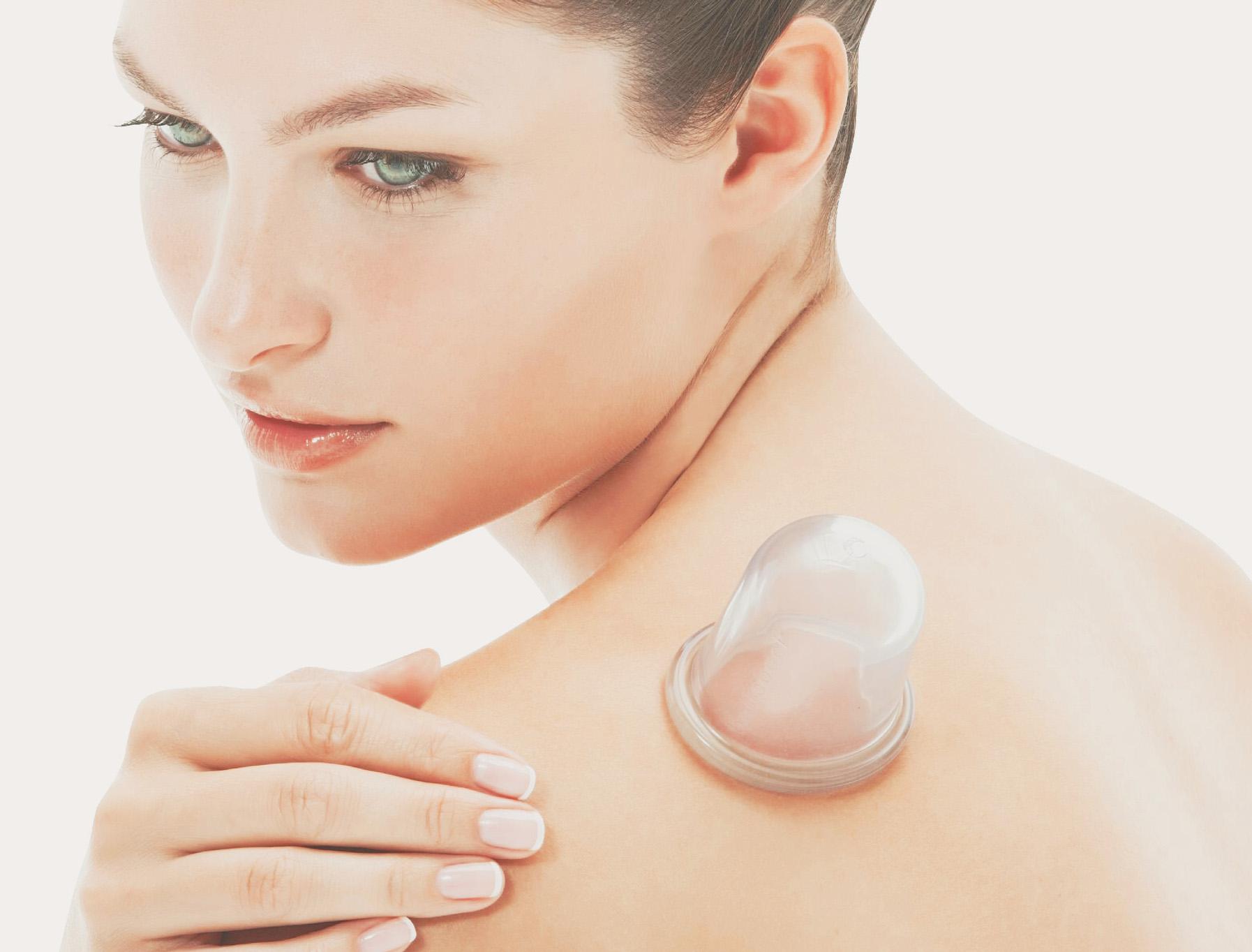
While the therapy has grown in popularity in the last decade, cupping isn’t a new-age technique. Its roots – and rings – run deep for thousands of years.
“Cupping therapy, also known as myofascial decompression, can be traced back to ancient Egyptian, Chinese, and Middle Eastern cultures,” said John E. Ebinger, PT, a board-certified sports medicine specialist at Banner Physical Therapyin Phoenix, AZ. “It’s been described as one of the oldest treatment interventions, and its history dates back to 1500 B.C.”
In ancient times, people used it for lung conditions, fever and other ailments. Today, practitioners use it for pain relief and musculoskeletal injuries like strains, sprainsand back injuries.
The theory of Eastern medicine is where there is stagnation, there is pain,” Ebinger said. “Remove the stagnation, and you remove the pain. This is what cupping seeks to address.”
How does cupping therapy work?
According to the National Center for Complementary and Integrative Health (NCCIH), cupping involves placing cups (made of glass, plastic, bamboo or ceramic) on the skin to create suction. Cups can be placed on the back, shoulders, stomach, legs or any muscle group where it’s easy to attach the cups.
“This suction creates a negative pressure environment allowing for myofascial decompression as the skin is drawn into the cups,” Ebinger said. “While massage therapy uses direct pressure to release tension, cupping uses negative pressure to lift the muscle fibers and draw blood to the area.”
There are two types of cupping methods, including wet and dry. And two cupping techniques, stagnant and dynamic.
“Dry cupping uses a pumping method to draw the skin tissue inside the cup,” Ebinger said. “The subcutaneous tissue (the bottom layer of your skin)
is pulled into the cups and held in place for a small amount of time—anywhere from 5 minutes to 15 minutes.”
With dry cupping, the cups can slide across the skin or remain in place, known as dynamic and stagnant cupping respectively.
Wet cupping, on the other hand, goes a step further. After creating a mild suction, a practitioner removes the cup and uses a small scalpel to make a tiny cut on that area of the skin. Then they use a second suction to draw out a small amount of the blood.
Is cupping painful?
If performed by a licensed practitioner, cupping shouldn’t be painful. It may cause temporary bruising (known as ecchymosis), swelling or soreness, depending on the person or amount of treatment done. The spots left behind typically fade after several days.
What are the pros and cons of cupping?
“Cupping may help reduce pain, but the evidence isn’t very strong.There are several purported benefits of cupping that include reduced pain, muscle tightness and inflammation, improved circulation and increased range of motion, yet there is very little data or highquality clinical research to support these claims,” Ebinger said.
Les Nouvelles Esthetiques no’95 42
spa therapies
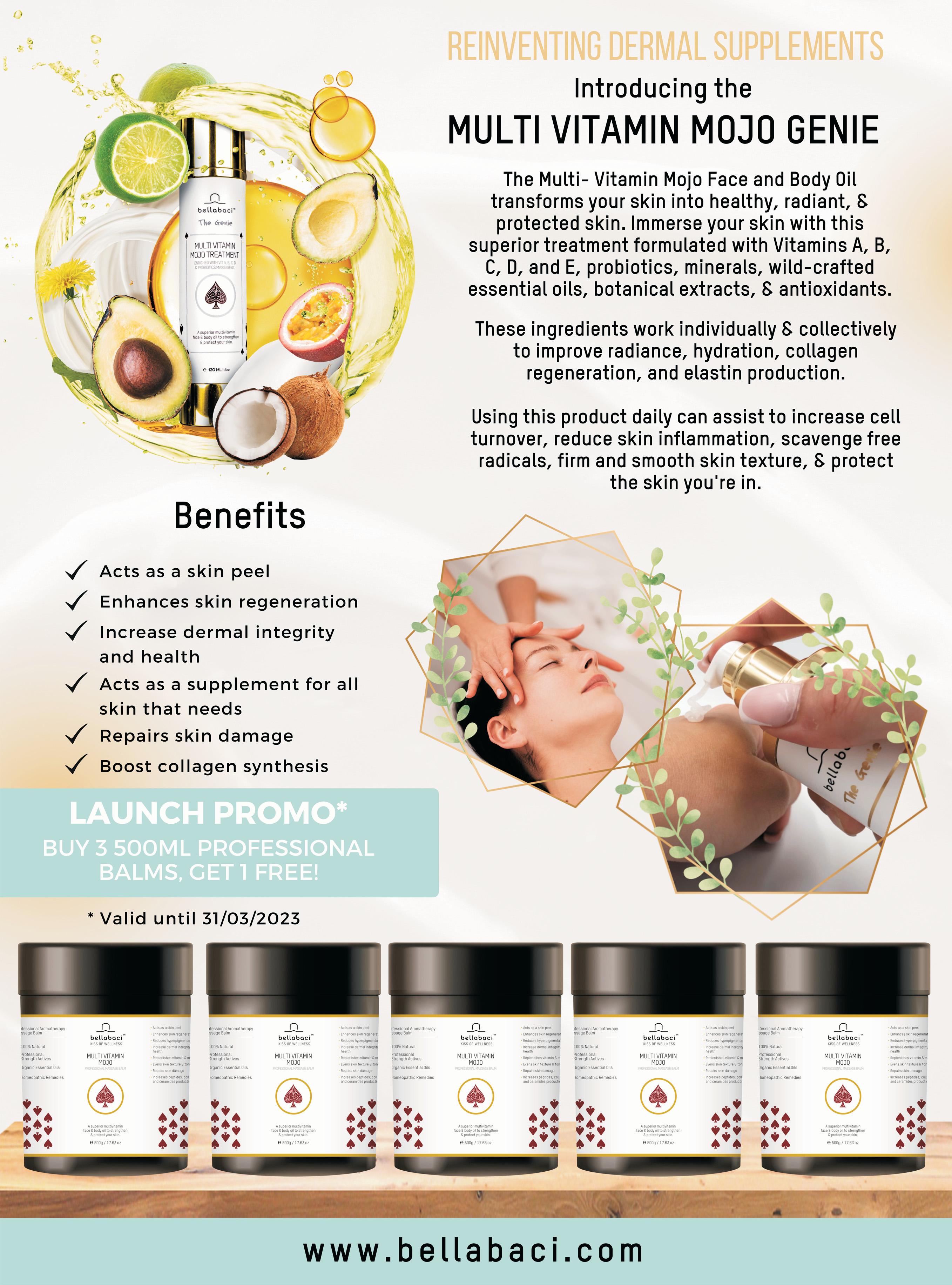
Lomilomi Massage:

The Art of Hawaiian Sacred Healing
 By Gloria Coppola, L.M.T.
By Gloria Coppola, L.M.T.
44
spa therapies
Lomilomi is an ancient Hawaiian restorative healing system, one component of which is the art of compassionate touch.
Lomilomi goes far beyond massage, however; it also reflects the connection we have with the land (‘aina), the spirit guides or ancestors (‘aumakua) and the breath of life (aloha).
Lomilomi, sometimes called Hawaiian massage, is beneficial for many ailments and to increase spiritual energy and personal power (mana). The nurturing strokes are relaxing; however, one soon learns this work is therapeutic on all levels.
Lomilomi kumu (master) Brenda Ignacio of Oahu, Hawaii, describes lomilomi as being a distinctly Hawaiian healing art form that is passed down through the generations by master practitioners. She says the basis of this spiritual work is the “embodiment of reverence of life, wisdom, knowledge and compassion.”
Lomilomi is now popular throughout the world. We can find versions of lomilomi offered in private practices and spa settings; yet, some lomilomi sessions practiced today are quite diluted from the traditional methods, due to constraints created by one’s work environment.
The purpose of this article is to describe the traditional aspects of lomilomi as taught by generations of Hawaiian practitioners.
Lomilomi Techniques
Lomilomi includes many techniques, some of which are similar to what we learn in Swedish massage, while others are similar to Asian bodywork techniques.
The strokes are done with the hands and forearms and are often long and sweeping, much like long, rolling waves traveling along the body. The foundation of lomilomi in many lineages includes the practice of a martial art, lua, which builds strength, focus, endurance and discipline. Traditional lomilomi sometimes also includes joint adjustments, although to practice that aspect of the work would require licensing as a chiropractor.
Lomilomi also includes range-of-motion work, deeptissue techniques and, most importantly, the full presence of loving touch. Every cell is blessed to create balance (lokahi). The nervous system is encouraged to slow down, thereby creating the space for techniques to be received rather than pushing through a blockage in the muscle tissue.
Creating movement in the spine is a primary focus of lomilomi. One might even experience unwinding similar to that which occurs in myofascial release.
Lomilomi massage on the abdomen is always emphasized in traditional teachings, in order to help the elimination process and improve the energetic function of the organs. Lomilomi may also include a detoxification program and the use of herbal remedies prior to the actual bodywork.
As Nancy Kahalewai, author of Hawaiian Lomi Lomi Big Island Massage, says, massage might not
be done at all; rather, the lomilomi practitioner might ask the client to return for massage after a condition has subsided.
Beyond Hawaiian Massage
Aunty Margaret Machado (1916–2009), the first native Hawaiian to receive her massage license, defined lomilomi as “the loving touch, a connection of heart, hands and soul with the source of all life.” (The terms “aunty” and “uncle” are used to show respect for Hawaiian elders.) Aunty Margaret wanted to share the loving touch of God with others. All traditional lomilomi practitioners humbly create sacred space through the power of prayer, or pule, and intention, and each lomilomi session begins with prayer.
Aunty Angeline, who lives on the island of Kauai in Hawaii, describes lomilomi as “open heart surgery.” This is an interesting description of a healing art that encourages the practitioner to bring divine love to the receiver through the healing powers of intention while creating the sacred space for receiving.
“All things Hawaiian are sacred,” adds Aunty Angeline’s son, kumu Michael Locey, also of Kauai. He emphasizes that what is real to Hawaiians includes the air we breathe being a conductor of the source of life force. He says one must connect to the fullest extent possible and breathe the air of Hawaii, sharing the breath of the elders, before one can say the aloha spirit is within them.
The reverence and respect passed on through the Hawaiian lineage from the elders is something one cannot learn just through a technique-based massage course. It is felt and received from the heart with the elders’ blessings.
Sacred Connection
When I recall my first lomilomi experience, I remember it as transcending time and space. The practitioner provided a safe and healing environment where the energy felt magical, mystical and divine. Intrigued by this intense present of spirit, I was led to further explore this ancient healing method that provided a sense of the sacred connection with our creator.
“Lomilomi is our spirit having a human experience,” says lomilomi kumu Harry Uhane Jim, who is originally from Kauai and now resides in New York, New York. He describes it as a “holy experience of gratitude when we connect to the echo of our ancestors and receive their grace.”
He said he feels this is the vibration one must manifest that distinctly defines the current of the sacred space, or temple, one creates for lomilomi.
“Lomilomi happened in a particular place, with pule, sounds, smells and an atmosphere that evoked healing before the massage ever began,” says Makana Risser Chai, author of Na Mo’olelo Lomilomi: The Traditions of Hawaiian Massage and Healing. “Imagine how you would feel if you found yourself in this place.”
Beyond the techniques and graceful movements, a practitioner must experience this depth of collective,
sacred consciousness. All the Hawaiian elders I spoke with for this article emphasized the importance of establishing a connection with the sacred prior to a lomilomi session. I asked kumu Brenda to explain how a practitioner creates this sacred connection.
“It begins with pure intention in every session,” she says. “This starts with pule. Our emotional inner space must be clear, as well as our physical space, [and]we ask permission at a soul level for imparting the trusted touch to come [through us] as a vessel, not personally.”
There is no question, she says, “living lomi means trusting, loving unconditionally and learning how to forgive and let things go. Only in this way can we teach and assist others to heal and spread this muchneeded precious cycle in our world.”
From his home on the Big Island, kahu Dane Silva says, “Ho’omae’mae, a protocol for creating a special place, includes clearing out any discordant elements that affect the energy flow of giver or receiver. Nature amplifies the natural energy.” Kahu refers to someone in training to be a Hawaiian shaman, or kahuna.
The practice of conflict resolution, or ho’oponopono, also clears the energy, while chants and intention set the vibration, says kumu Michael. Pono is the greatest aspiration to connect to the source of life, he says, and the lomilomi practitioner works to achieve this balance.
Hands-on Lomilomi
If you are interested in studying lomilomi, I suggest you prepare yourself for a lifestyle change and a spiritual commitment. Remember, lomilomi is not just Hawaiian massage. In my more-than-30-year career in the healing arts, I have studied various styles of lomilomi with many Hawaiian elders, with my original training in temple style taught by the lineage of kahu Abraham Kawa’i. I have continued to learn from many kumus and mentors of different families.
If one is called to follow and study the sacred Hawaiian healing arts, he will embark upon a journey that will increase his awareness of self. He will learn more than a style or technique; he will discover who he is from the fullest sense of his soul journey. The healing touch he provides to another will be intuitive and guided by the contract between spirit and the recipient.
Lomilomi continues to spread and heal our planet by blessing each recipient with the spirit of aloha. We can clearly see that merely learning a technique is not the avenue to this sacred healing work. One must truly learn and live the ways of the indigenous ones and connect on the deepest levels with spirit.
Through lomilomi, “we transfer mana and spiritual power,” explains kahu Dane. “Hawaiian healing is for everyone. If we use it daily for ourselves and others, we will live long and prosper spiritually.”
In humble gratitude to all the Hawaiian elders and mentors who continue to open my heart, may the spirit of this sacred work continue to be respected across the nations and bring loving touch to those ready for healing.
The Benefits of Facial Acupuncture
 By Rona Berg
By Rona Berg
Acupuncture, a traditional Chinese healing art, has been well-tested for millennia. And as Westerners have become more comfortable with the therapeutic use of needles, it has become more mainstream here— especially, most recently, with acupuncture facials.
Facial acupuncture offers a range of benefits and, though it may seem counterintuitive (needles, after all!), an acupuncture facial can be incredibly relaxing. Helina Fan, certified doctor of Traditional Chinese Medicine (TCM) and founder of the TCM-rooted skincare brand Redmint, has just opened her second wellness sanctuary, also called Redmint, in San Francisco.
The new Redmint features 5,000 square feet of indoor and outdoor space, 10 private treatment rooms, plus an herbal bar featuring a variety of herbal remedies that support health and well-being with a menu of herbal lattes, shots, elixirs and teas.
“Redmint was created to offer a sense of serenity for our clients, a sanctuary to retreat from busy urban living,” says Fan. “Our hope is that clients will build a self-care routine that melds ancient wisdom with modern innovations to create a personal wellness journey.” In addition to acupuncture facials, Redmint offers body acupuncture, which activates the Qi, or life energy force; and gua sha facials to help increase
circulation and detoxification of the skin. We spoke with Fan about the benefits of the acupuncture facial.
What are the benefits?
Acupuncture can promote blood and fluid circulation, stimulate production of collagen and elastin naturally for a younger and healthier look that is long-lasting. This service is the most powerful natural treatment for anti-aging.
It is important to share that facial acupuncture is not only acupuncture on the face but also on the body, to address underlying root causes of internal aging. Acupuncture facials can help achieve a younger look while getting healthier, a total beauty from within treatment that has no comparison.
Acupuncture and TCM have been around for ages. Why are they becoming popular now?
Acupuncture is young in the U.S., it’s only around 25 years since the first legalization of acupuncture practice. The popularity is due to its proven benefits: helping many that otherwise would have to suffer a lot more pain or undergo surgery. Acupuncture and herbal medicine are still not a mainstream wellness and holistic health solution here. Redmint wants to bring it onto a mainstream platform, as it is the best self-care solution for people of all ages.
Consumers are getting smarter and understanding more about the impact of other cosmetic procedures such as Botox and fillers. While those procedures provide an instant result, they paralyze muscles over time, which can have a negative impact on looks and health in the long term. It is great to look good in the 20s and 30s, but it is important to seek solutions that make you look good in the 40s, 50s, 60s and beyond too. Facial acupuncture really serves this purpose as the natural regeneration of cells for tighter and brighter skin.
Does it improve the health of the skin? How?
Facial acupuncture can help with acne, sensitive skin and many other skin concerns. Blood is the best natural antibiotic to clear inflammation such as acne and problematic skin type, and the healthy circulation of blood flow also stimulates the production of collagen. Aging skin and acne skin is usually a lack of blood circulation and blockage of flow, and facial acupuncture solves that naturally.
How do these compare to acupressure facials?
While acupressure facials are great treatments, facial acupuncture provides a deeper solution, reaching deeper muscle layers and stimulating blood flow in deeper layers of the body, thus offering a much more powerful result.
Les Nouvelles Esthetiques no’95 44
spa
therapies
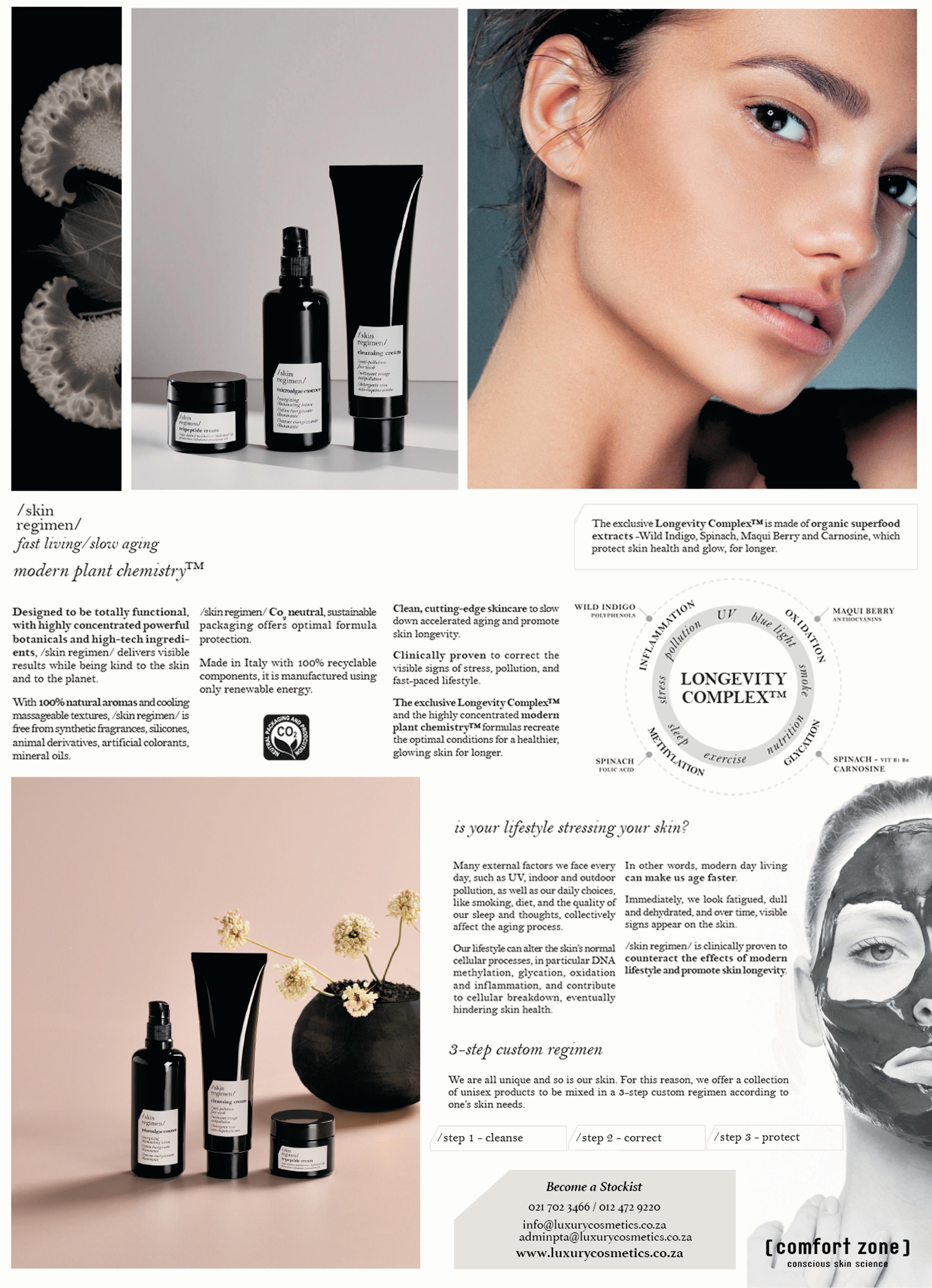
Commitment to Consistency
Commitment to consistency. With so many promises of beautiful skin wrapped up in the irresistible allure of something new and exciting by the beauty industry, it is difficult to stay on track. Sure, there are many new and exciting discoveries being developed with super ingredients and formulas by the beauty and skincare industry. Still, none are going to make much of a difference unless you commit. Good skin means you need to invest and commit, allowing your skincare of choice the time it takes to work for you. It’s time to take a long-term view in 2023.
Whatever you choose to introduce needs to be something that you stick to. Every. Single. Day.
Dr Alek and the SkinMiles team have put together 5 commitments.
Commitment 1:
Cleanse gently and religiously
Ditch that bar of soap or the face wash laden with foam, cleansing can’t be done here and there. No matter your skin type, texture, or current condition. It’s an everyday necessity, clean skin is where it all begins.
Commitment 2:
Exfoliate with an active ingredient
Exfoliating acids have fast become a popular trend because of their proven ability to resurface the skin. These chemical exfoliants work in two ways: by lifting the build-up of dead cells on the skin’s surface to reveal a brighter, smoother complexion (in the case of alpha hydroxy acids - AHAs), or by penetrating the pores to shift build-up and help clear breakouts (in the case of beta hydroxy acids –BHAs). Either way, exfoliating is a key step in your weekly skin care routine and one that shouldn’t be skipped.
Commitment 3: Include Vitamins A, C, E and B3
Vitamin A
Vitamin A - Retinol, a derivative of vitamin A works by accelerating the rate of cell turnover in the skin, meaning new, fresh skin cells make their way to your skin surface faster than they normally would. Retinol’s benefits span from ageing and help with pigmentation or acne scarring to overall skin texture and radiance.
Vitamin C
Vitamin C - this is an all-rounder in your skincare. It is a powerful antioxidant, which helps fight free radical damage, lightens hyperpigmentation spots and aids in skin renewal. Vitamin C works to build the skin’s immune system and prevents premature ageing and further breakdown of the skin barrier.
Vitamin E
Vitamin E - is also an antioxidant and serves as a good moisturiser and soothing cream. Vitamin E provides photo-protection to the skin by absorbing UV light. It helps in the biosynthesis of collagen and elastin, benefiting the skin building and rejuvenation process.
Vitamin B3
Vitamin B (or niacin) - is a powerful antioxidant and has anti-aging and anti-inflammatory properties, which help to soothe the skin. Niacinamide also works to tighten pores and tackles uneven skin tone and dullness.
Commitment 4: Find a good moisturiser
Your next vital step is to moisturise. This is a nonnegotiable to ensure your skin is hydrated and protected, making it look soft and supple. There are
By Dr Alek Nikolic - SkinMiles
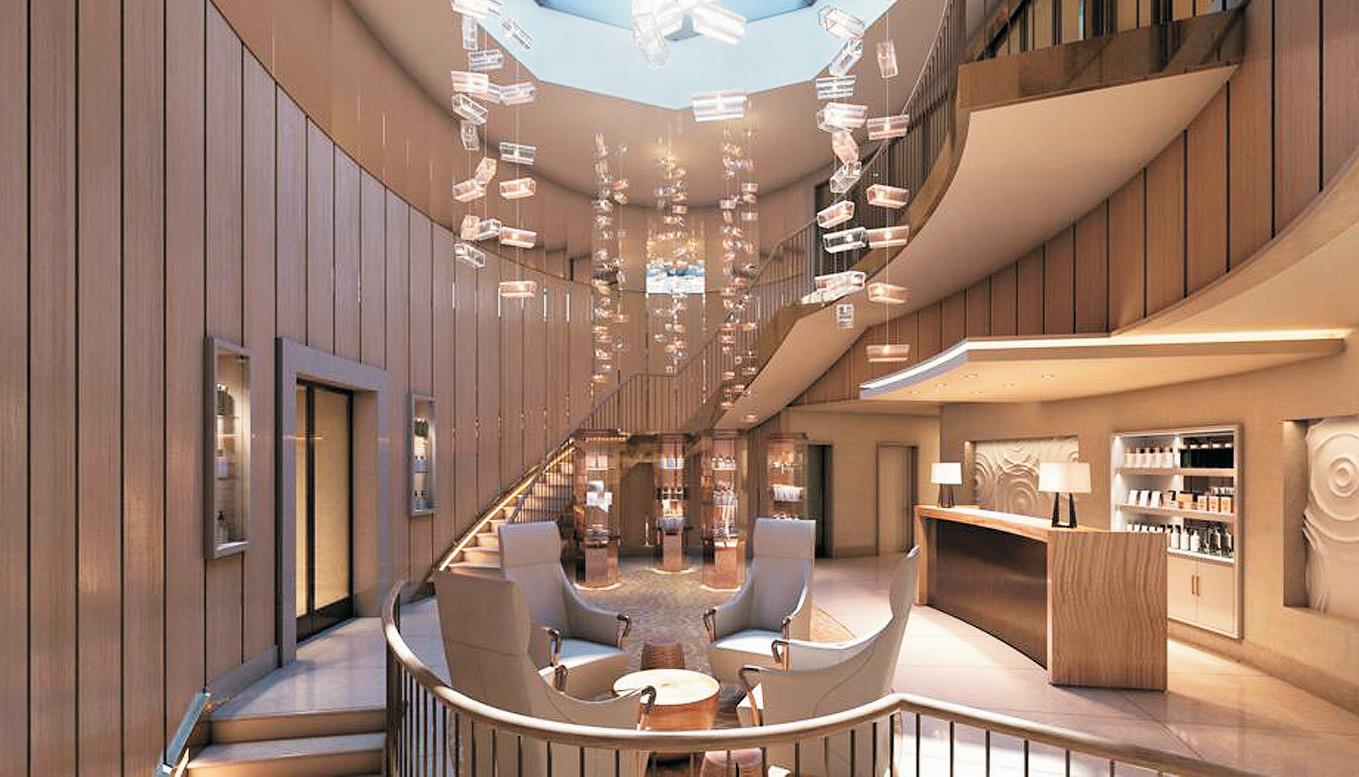
three basic categories of ingredients found in moisturisers - humectants, occlusives and emollients, and most moisturisers will contain a combination of the three in varying proportions. #SkinSchoolhumectants are molecules that attract and bind water from the deeper layers of the skin. Occlusives create a barrier over the skin to prevent water loss. Finally, emollients work by filling in the gaps between skin cells and replacing skin lipids.
Commitment 5: Choose your sun protection wisely
This is another non-negotiable. If you want to take your skincare seriously, you absolutely must be using an SPF every morning of 30 or higher. It’s so important to protect your skin against the harmful rays of the sun and because this is ignored skin cancer and pigmentation are real issues for so many South Africans! Without the use of sun cream you will constantly be reversing any good you are doing to your skin.
SkinMiles: Your Personal Skincare Destination
SkinMiles opened its doors in November 2015 after Dr Alek Nikolic realised that doctor-only recommended products with active ingredients were difficult to access. Dr Alek also realised that many people are not sure which products or ingredients to use for their skin types and skin concerns. “SkinMiles was created to allow for more convenient access to doctor recommended active ingredients, and to provide honest, reliable and effective advice for a personalised skin regime, to everyone.”
Visit: https://skinmiles.com
Les Nouvelles Esthetiques no’95 48
spa therapies
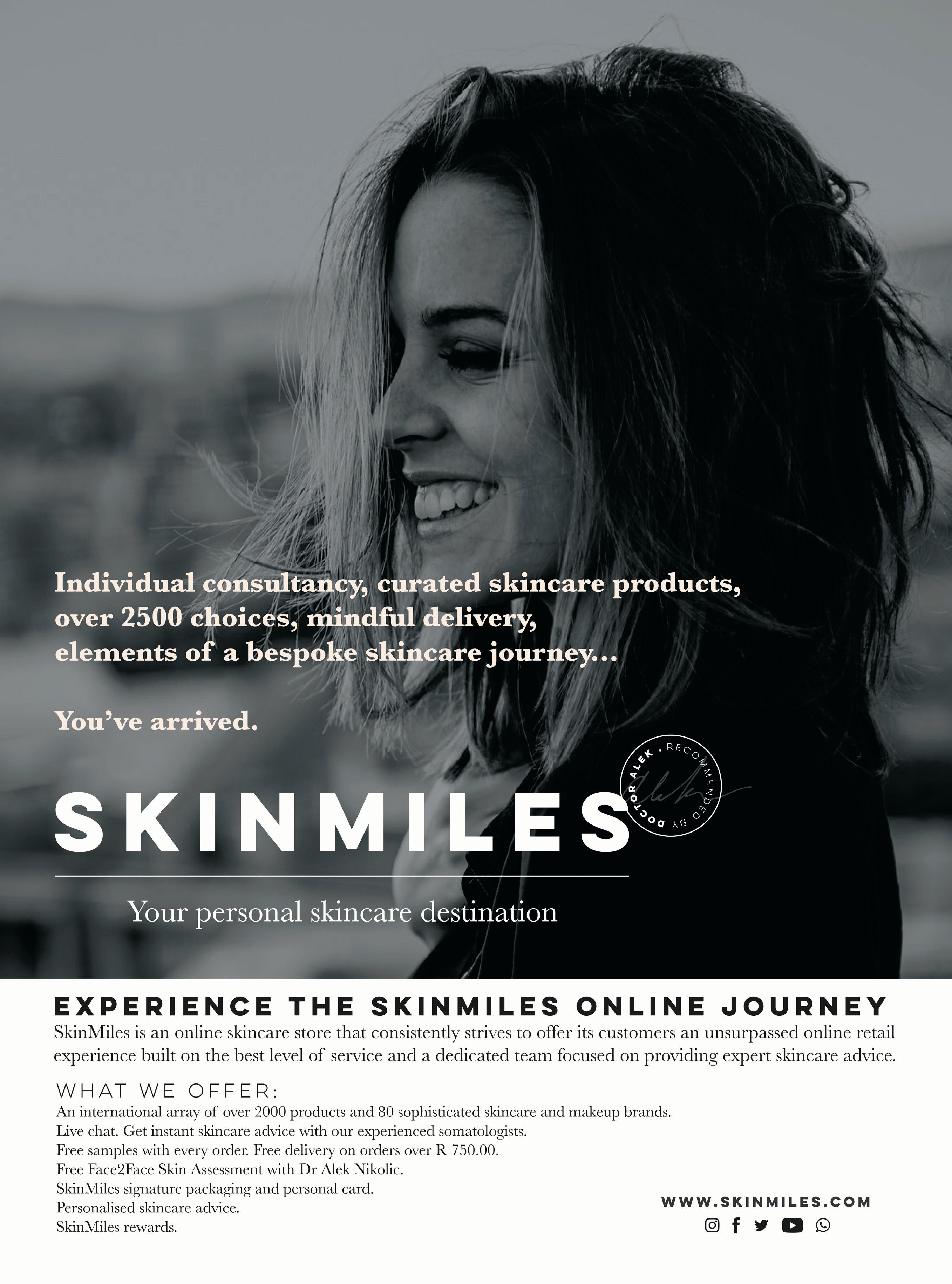
Industry Intelligence - January 2023
As an industry total revenue has increased by 12% overall when comparing January 2022 to January 2023 with the Hair Industry increasing by 8% and the Beauty Industry by 28%. Overall service Revenue increased by 17% and Retail has increased by 7%. We are seeing an average Docket charge increase of 5% and an increase of 8% in the number of dockets.
Overall, the Industry has Decreased by 4% from 16% last month to 12% this month. The Beauty Industry Increased by 14% from 14% last month to 28% this month. The Hair Industry has decreased by 8% from 16% last month to 8%.
The Hair Industry Increased Service Revenue by 13% year on year but retail has remained unchanged in the January 2022 to 2023 comparison. Average docket charges increased by only 1% and client visits increased by 8%
The Beauty Industry Increased Service Revenue by 34% and Retail Increased by 33%. Average docket revenue increased by 20% and total client visits by 7%
The standout statistic this month is that while the increase in client visits were similar in both industries, Hair 8% and Beauty 7%, the Beauty industry was able to turn this into a 28% revenue compared to the Hair industries 8% total revenue because of the Beauty Industries 20% increase in average docket charges.
Want more Personalized Information?

ESP Cloud gives you real time analysis of your own business and most importantly the "ESP Staff Excelerators (C)" boost your or your staff turnover performance & client retention. Which is critical to maximise turnover by increasing the per client spend. This technology is available to all ESP Subscribers so if you aren't already making use of this Industry Leading Tech ... connect with us to access your personalized view of your business in the most affordable way ... From a single Practitioner to the most sophisticated, Group access your NanoVerse.
Email: info@espconnect.africa
50
esp online
By
spa
business






















 By Global Wellness Summit
By Global Wellness Summit









 By Bess O'Connor
By Bess O'Connor







 By Global Wellness Summit
By Global Wellness Summit




















 By Heena Paryani
By Heena Paryani















 By Gloria Coppola, L.M.T.
By Gloria Coppola, L.M.T.
 By Rona Berg
By Rona Berg





